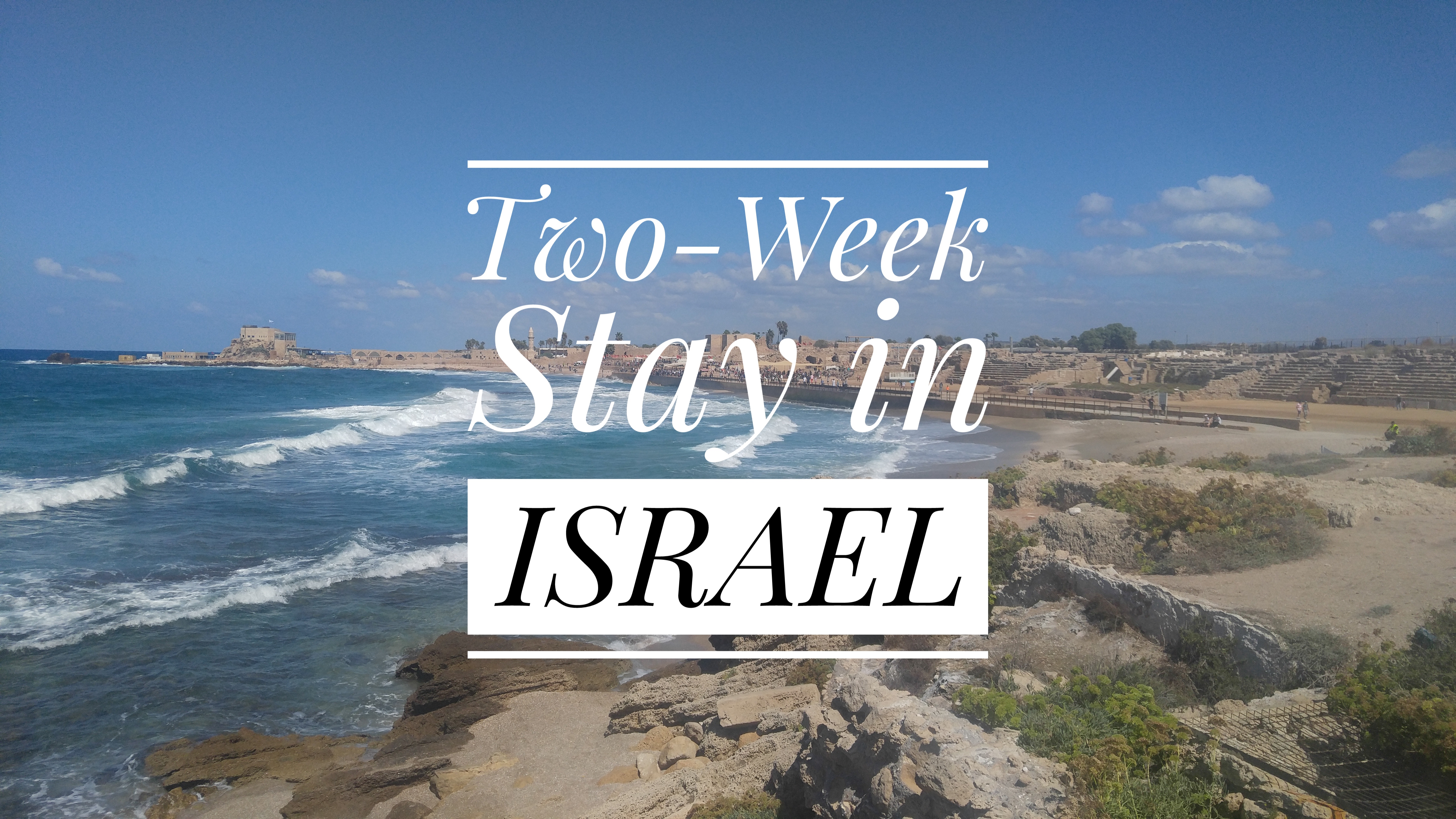
My October Love Affair with Israel (A Two-Week Vacation)
According to Passport Index, the Philippines has a Visa-Free Score (VFS) of 61 as of October 2017. This means that Philippine passport holders can visit 61 countries/territories either visa-free or with visa-on-arrival, one of which is Israel. Passport Index’s consideration is comprised of “193 United Nations member countries and 6 territories (ROC Taiwan, Macao (SAR China), Hong Kong (SAR China), Kosovo, Palestinian Territory and the Vatican) for a total of 199”.
Coming from the Philippines – a country that is comprised mostly of Catholics, a visit to Israel can be considered fortunate. When you say Israel, most Filipinos will think “pilgrimage”. Who wouldn’t want to visit the Holy Land?? And for the non-religious Filipinos, who wouldn’t want to visit a country where a visa is not required for a stay of up to 90 days??
When I told my friends and relatives about my plan to visit Israel, almost all of them were excited for me. Some even said “I want to visit it, too!” Only one person said “Why?!”, and he’s European. Apparently, a number of Europeans consider a visit to Israel as risky. There seems to be a negative impression about someone’s safety in Israel based on what they see on the news. But it’s worth keeping in mind that good news don’t bring as much ratings as bad news do.
I had 14 days to get to know Israel. Most of my stay was spent going around the country with my boyfriend. There were only two occasions that I was in a group tour. First was when I joined the one-day Jerusalem and Bethlehem tour of Tourist Israel. Second was when Igal and I joined New Sandeman’s free tip-based tour in Jerusalem. Both times, the guides encouraged the participants to let their loved ones know that it is perfectly safe to visit Israel. This is true. I felt safe in Israel. IT IS safe to travel in Israel. Plus, you may not speak Hebrew but most of them speak English! It won’t be hard asking for directions or assistance.
Before I discuss about the places I’ve visited during my stay in Israel, let me first mention a few of the amazing things I learned about this state.
Drip Irrigation Technology
An impressive Israeli invention used by the state to grow crops and put greeneries around the dry country is their drip irrigation technology. The technology is a controlled method of irrigation which works by providing direct supply of water to the roots. The invention was made by Simcha Blass, which led to the establishment of Netafim. The system was further developed by Rafi Mehoudar. It first used plain water in the 1960s but currently uses recycled water.
Do you know that about 90% of Israel’s wastewater is recycled? The state is doing an amazing job on saving water!
I suppose when your neighbors are not very much willing to give a helping hand, you try your best to be independent and self-sufficient.
Here are videos from Netafim about drip irrigation:
Other Israeli Inventions
There are tons of them! But the ones mentioned by our tour guide that I’m familiar with or have used are the following: Waze, Viber, and USB drive. I don’t think any background info or description is necessary for these three.
Mobile Sim Card
It’s cheap!! We bought my sim card from a convenience store and Igal registered it under his account. I spent about 30 ILS in total for the sim card and the plan which came with 6gb of data, unlimited texts and unlimited calls with one month validity. Igal can deactivate it anytime. I have almost the same plan in the Philippines and I’m paying about 54 ILS per month for it. Let’s not even talk about speed. I’m from the Philippines, so data speed in Israel is effin’ awesome for me!
Another thing in Israel that I wish we have in the Philippines is mobile number portability. This allows you to keep your number when switching from one network provider to another. This is in line with the state’s Number Portability Plan which was enacted in September 2006. What a way to encourage competition and prioritize the consumers’ needs!
Let’s now go to the long part – the places I visited during my trip to Israel.
Jerusalem
I went here twice. First was in a paid group tour from Tourist Israel, second was in a free tip-based tour from New Sandeman.
Tourist Israel
I booked the tour originating from Tel Aviv. Our first stop was Mount of Olives where the guide talked about Israel’s history, the Temple Mount’s history, the Jewish graves on Mount of Olives, the Muslim graves by the eastern wall of Temple Mount, the Dome of the Rock, the Al-Aqsa Mosque, and the Mount of Olives itself. We then proceeded to Bethlehem. After which, the group went back to Jerusalem and spent about three hours going around the old city.

The guide took us to the following places in the old city of Jerusalem:
The Cardo – Jerusalem’s main street from more than a thousand years ago. Today, a portion of the cardo is in use as a shopping lane.
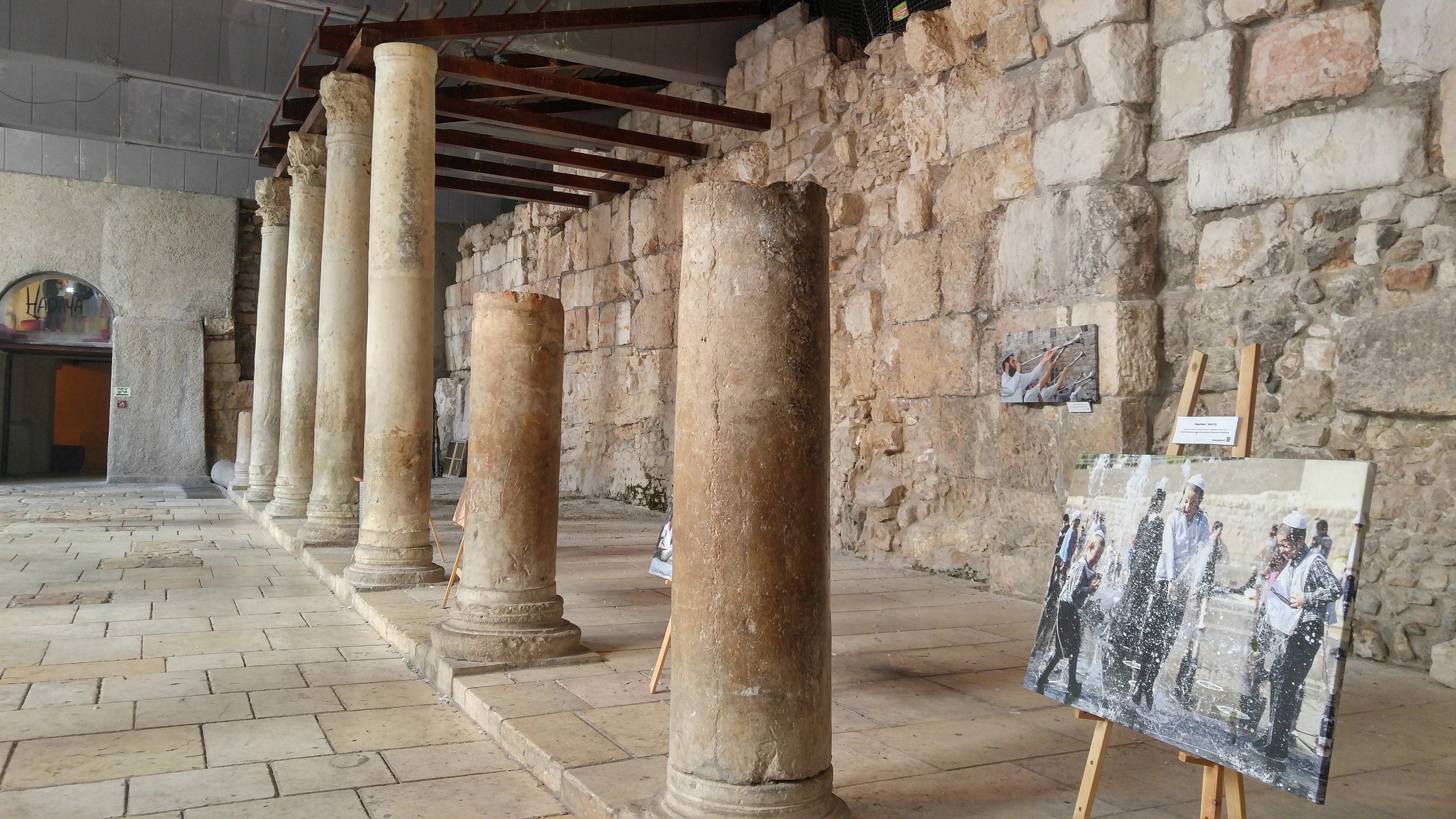
Western Wall / Wailing Wall – the guide briefed us about it and gave us time to say prayers/wishes by it. I’m not a religious person but touching the wall while saying my wishes and prayers gave me goosebumps. The ritual is to wash your hands before praying at the wall. Washing stations are placed at the plaza, near the entrances. There are separate areas for men and women.
The guide occasionally stopped religiously dressed Jewish men who happened to walk near our group and explained to us the religious parts of the men’s outfit.
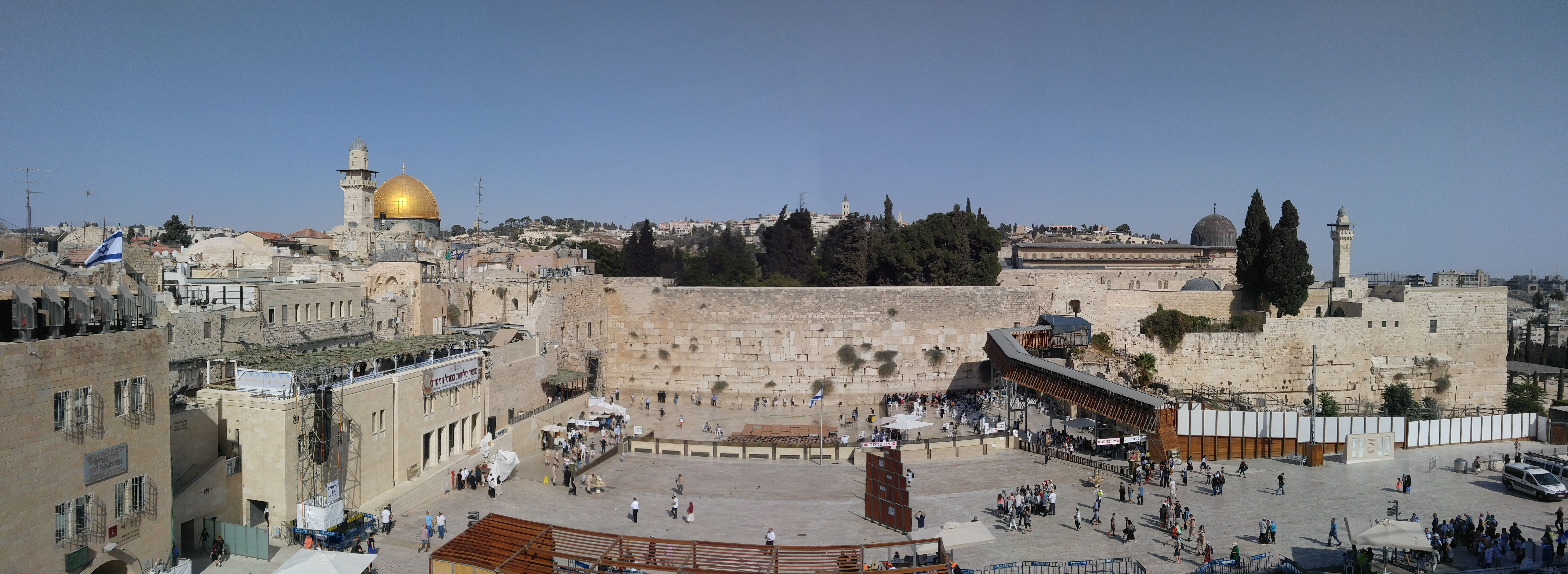
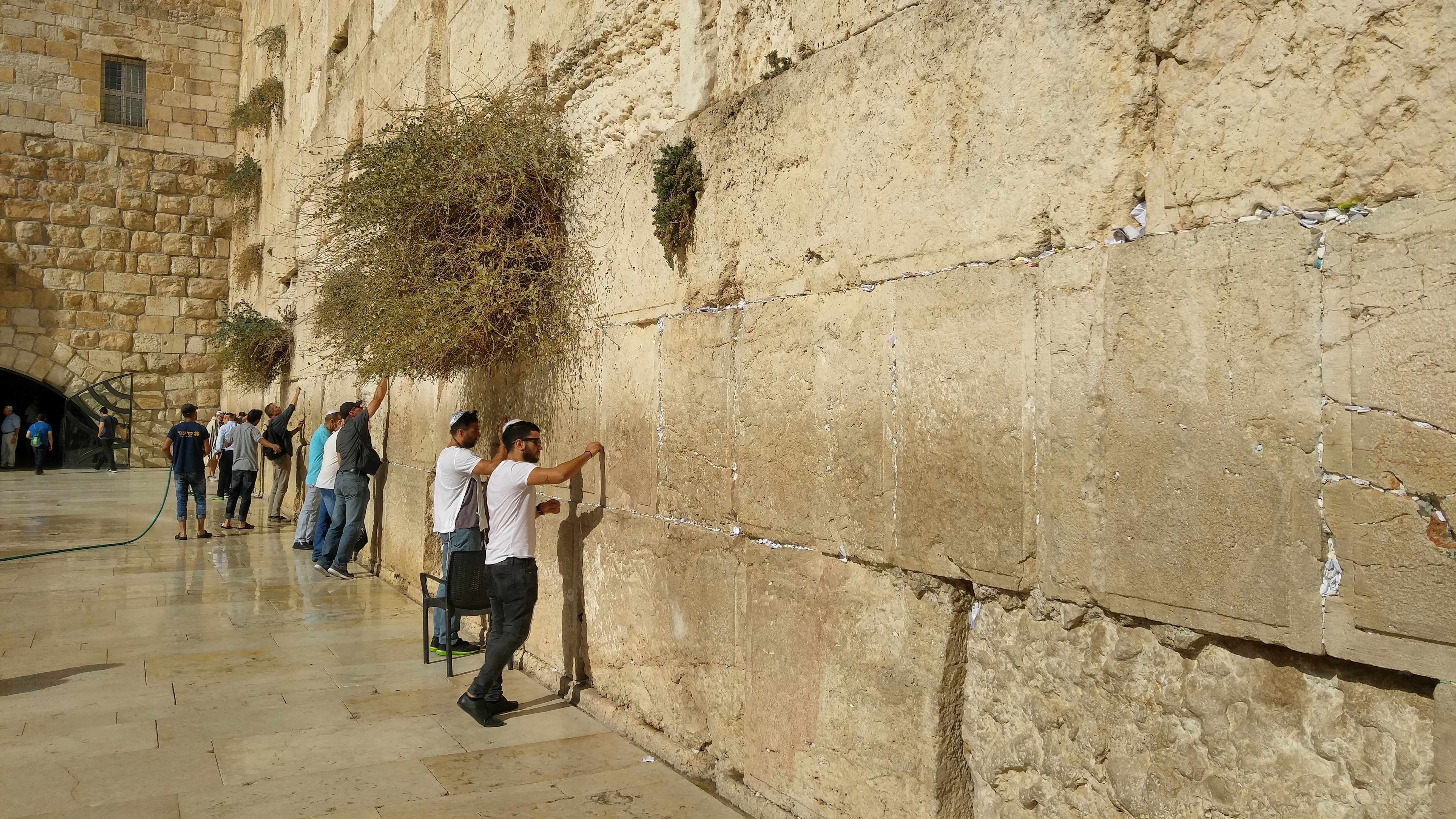
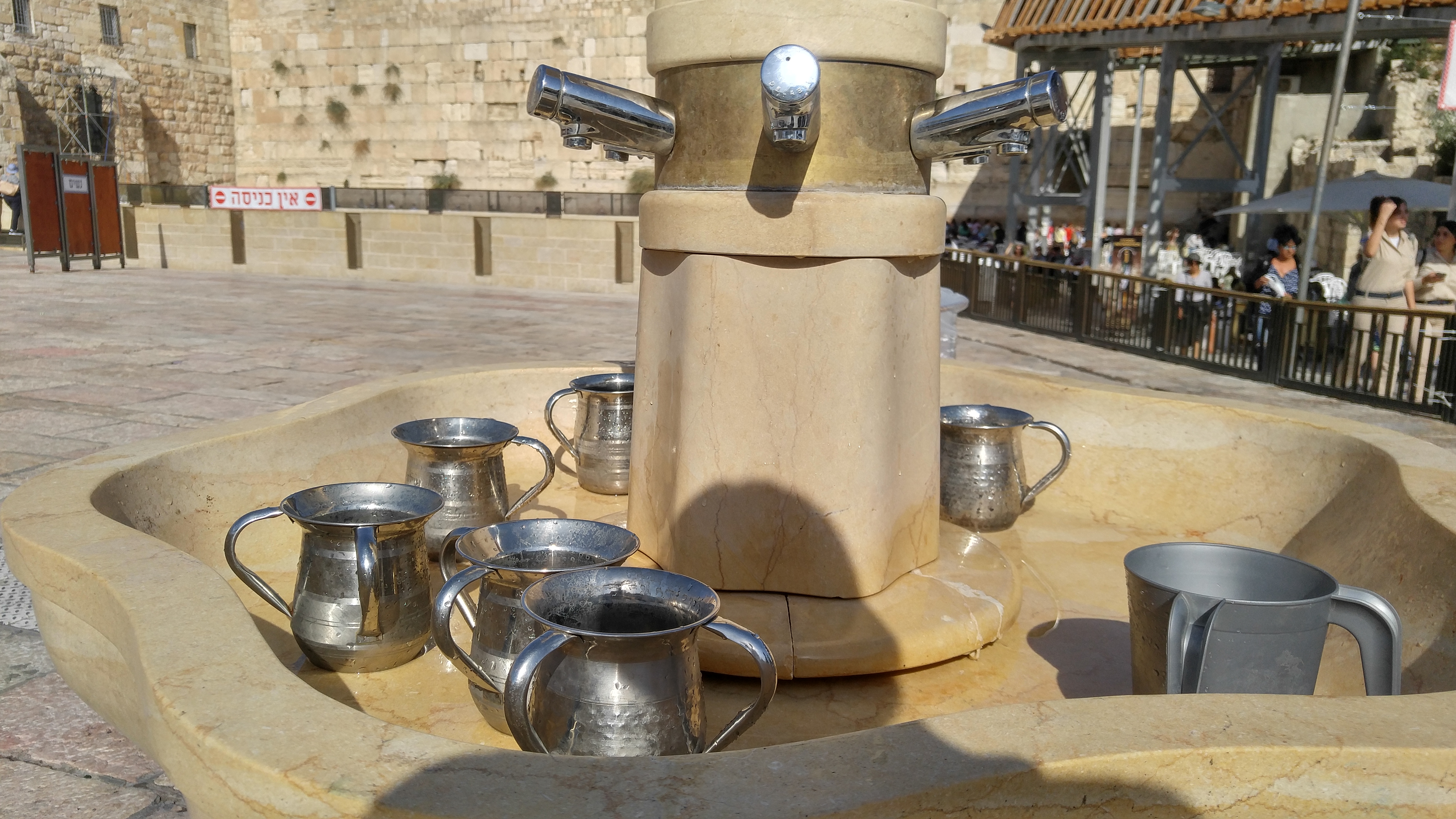
Via Dolorosa – a route followed by pilgrims as they recall and reflect on the events to Jesus’ crucifixion. Following the stations eventually led us to the Holy Sepulchre Church where stations 10 to 14 are. This is a crowded route so make sure that you don’t get separated from your group.
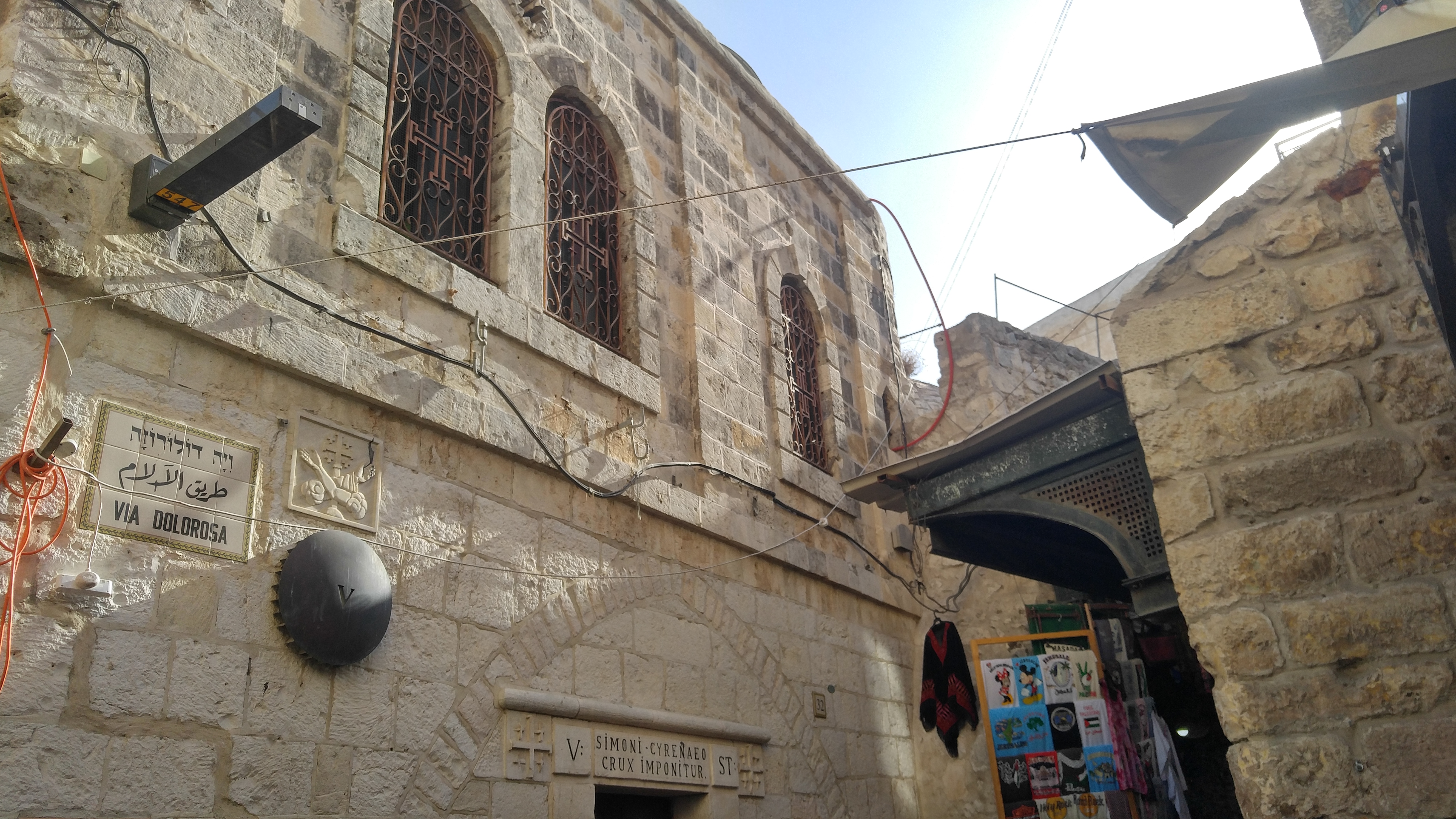
Holy Sepulchre Church – before entering, the guide showed us a map of the church which presents its religious compositions/owners and gave us a brief discussion on how these various religious orders try to maintain harmony in the church that they share. He took us inside for a walk-through with discussion of Jesus’ crucifixion spot (Calvary), stone of anointing, and tomb, and showed us the Chapel of Adam which is beneath the Calvary. There are lines for touching the spot of crucifixion and entering the tomb, but we didn’t line up for those since we didn’t have the luxury of time.
The guide told us to pay attention to the ladder on the church’s facade, beneath the right window. This ladder hasn’t been moved since the 18th century. Apparently, nobody is sure on how the ladder ended up in there and who, among the religious orders, owns it. As per existing status quo agreement between the religious orders in the church, (1) whatever site/s an order has claim on when the agreement came about will indefinitely be under the said order’s control, and (2) no change of any sort can be made in the church unless all of the religious orders have agreed to it. This left the ladder immovable as no one dares disturb the status quo.
The guide said that it wouldn’t be a surprise if moving the ladder triggers a conflict considering how the theft of the 14-pointed silver star marking Jesus’ birth spot in Bethlehem is considered as one of the catalysts to the Crimean War. Seems like religion can bring out the worst in us.
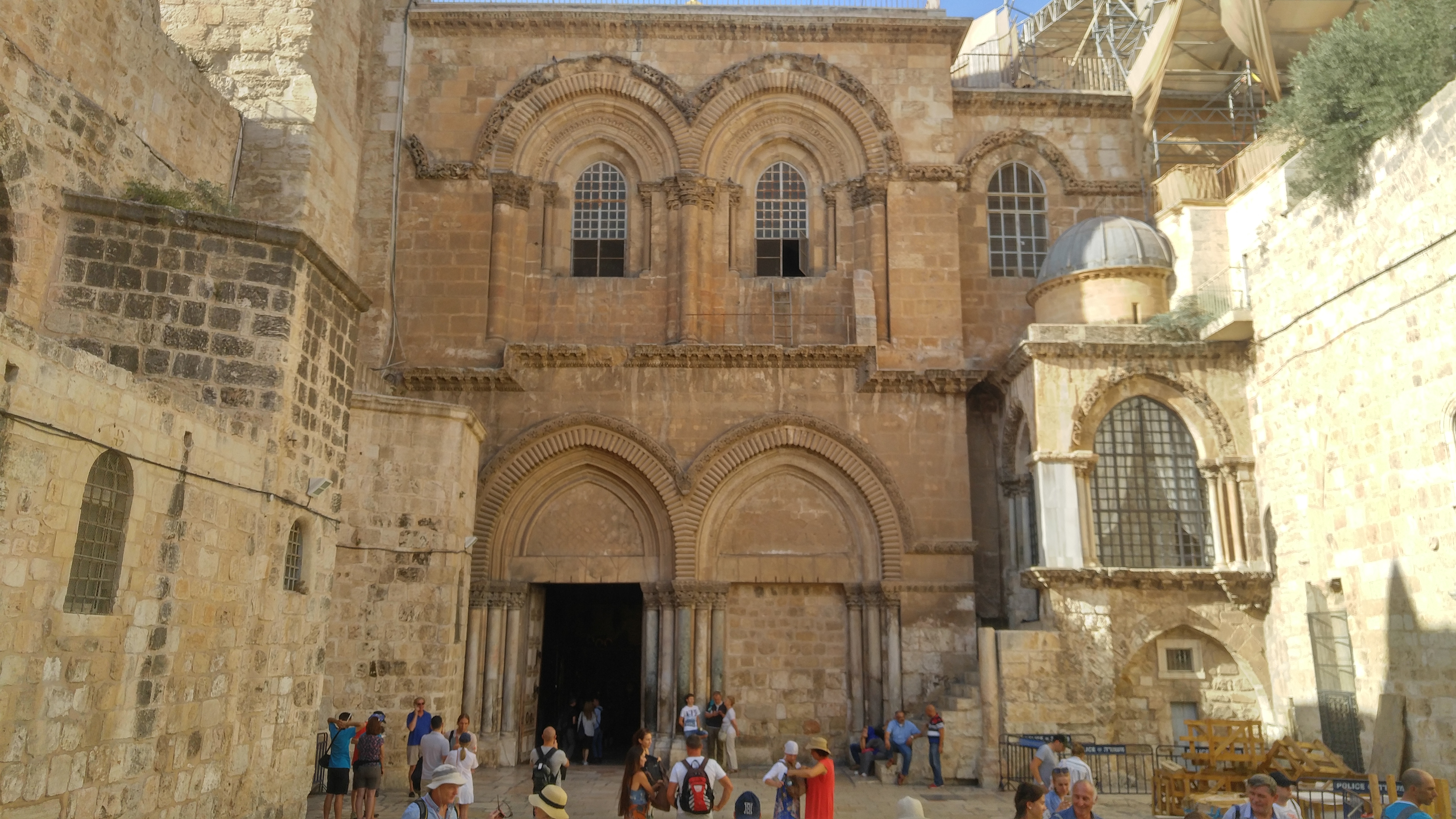
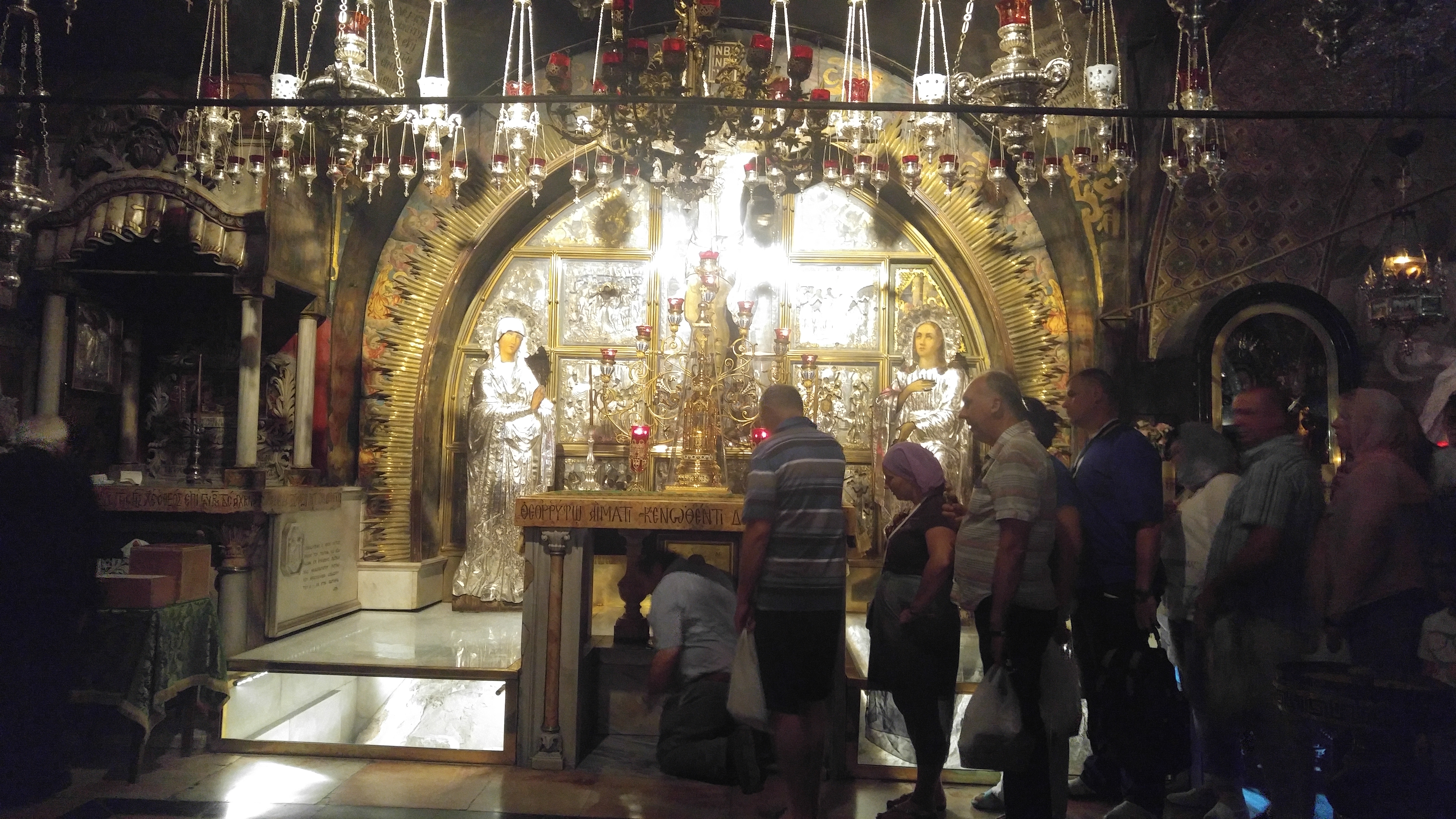
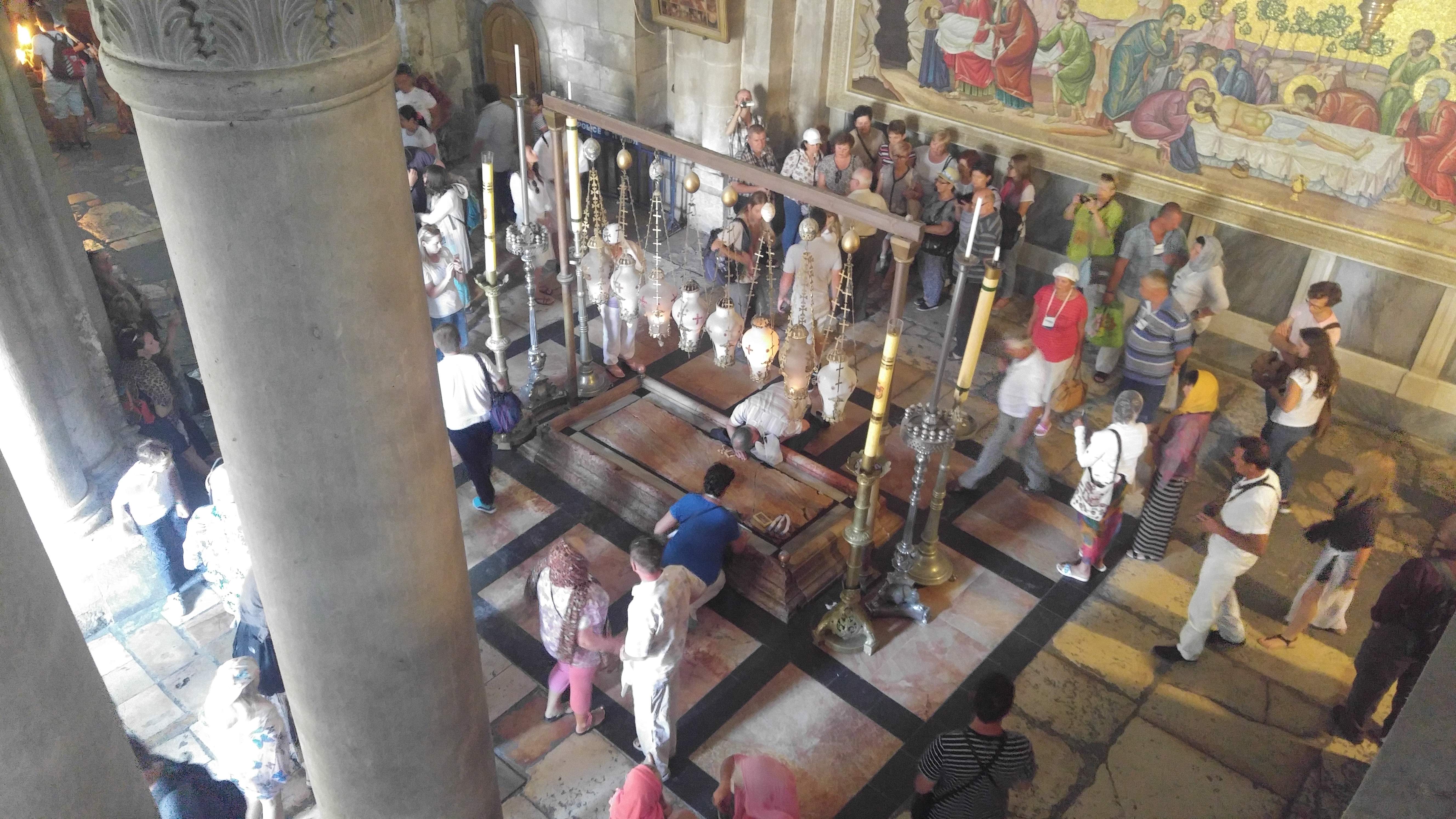
In addition to the aforementioned major spots, the guide also took us to and gave some commentary or brief discussion on the Knight Hospitallers, an excavation site of ancient Jerusalem, and the markets in the Muslim quarter. On our way from Mount of Olives to Bethlehem, our guide also pointed to us Gehenna – the Valley of Hinnom in Jerusalem – which can be considered as “hell” and explained to us why.
New Sandeman
The guide gave us a background on the Tower of David; he took us to the Armenian Quarter where he explained why it exists and its importance and showed us a way to identify an important building in the old city; he took us to an excavation site of ancient Jerusalem where he talked about it and why the Jewish Quarter looks new relative to the other quarters; he took us to a spot overlooking the Western Wall where he discussed its history as well as a brief discussion on the Mount of Olives and the Dome of the Rock; he walked us through and gave commentary on the Muslim Quarter – along its markets and residential area; he brought us right outside the Holy Sepulchre Church and talked about the crucifixion, stone of anointing and tomb of Jesus, the church’s history and religious owners, and gave us a tip that the best time to visit to avoid the crowd is before 9am; the tour finished at the Latin Patriarchate, where he discussed its importance and history. At the end of the tour, the guide took out of his backpack a big bag of the local Za’atar herb and two huge bagel breads. He let us taste the bread with za’atar on it, and packed what’s left of the za’atar into mini bags for those who want to take some of it home.
Bethlehem
This is the part of my trip where I had to cross border and go from Israel to Palestine. My visit here was part of the day tour I availed from Tourist Israel. The tour description mentions a visit to the Shepherd’s Field and The Church of the Nativity. For the tour I joined, we only visited The Church of the Nativity and the one adjacent to it, the Church of St. Catherine of Alexandria. Our group was in Palestine for about 2 hours, 30 minutes of which was spent in a souvenir shop (not fun!). Our Israeli guide drove us to Palestine, brought us to the souvenir shop where he switched with a Palestinian guide and then waited for us to finish our Bethlehem visit.
Inside the Church of the Nativity, visitors can find the birth spot of Jesus and the manger. The birth spot is marked by a 14-pointed silver star and surrounded by lamps representing three Christian communities – Greek Orthodox, Catholics, and Armenian Apostolic. A few steps away is the manger, where the newborn baby Jesus was laid.
It’s quite interesting observing the religious visitors. It’s like you can feel how moved they are with the opportunity to see and touch Jesus’ birth spot and the manger.
The Church of St. Catherine was closed during out visit so we only got to see the outside of it. In front of this church stands the statue of S. Hieronymus (St. Jerome) – the Dalmatian priest who spent 30 years translating the Bible from Hebrew and Greek to Latin.
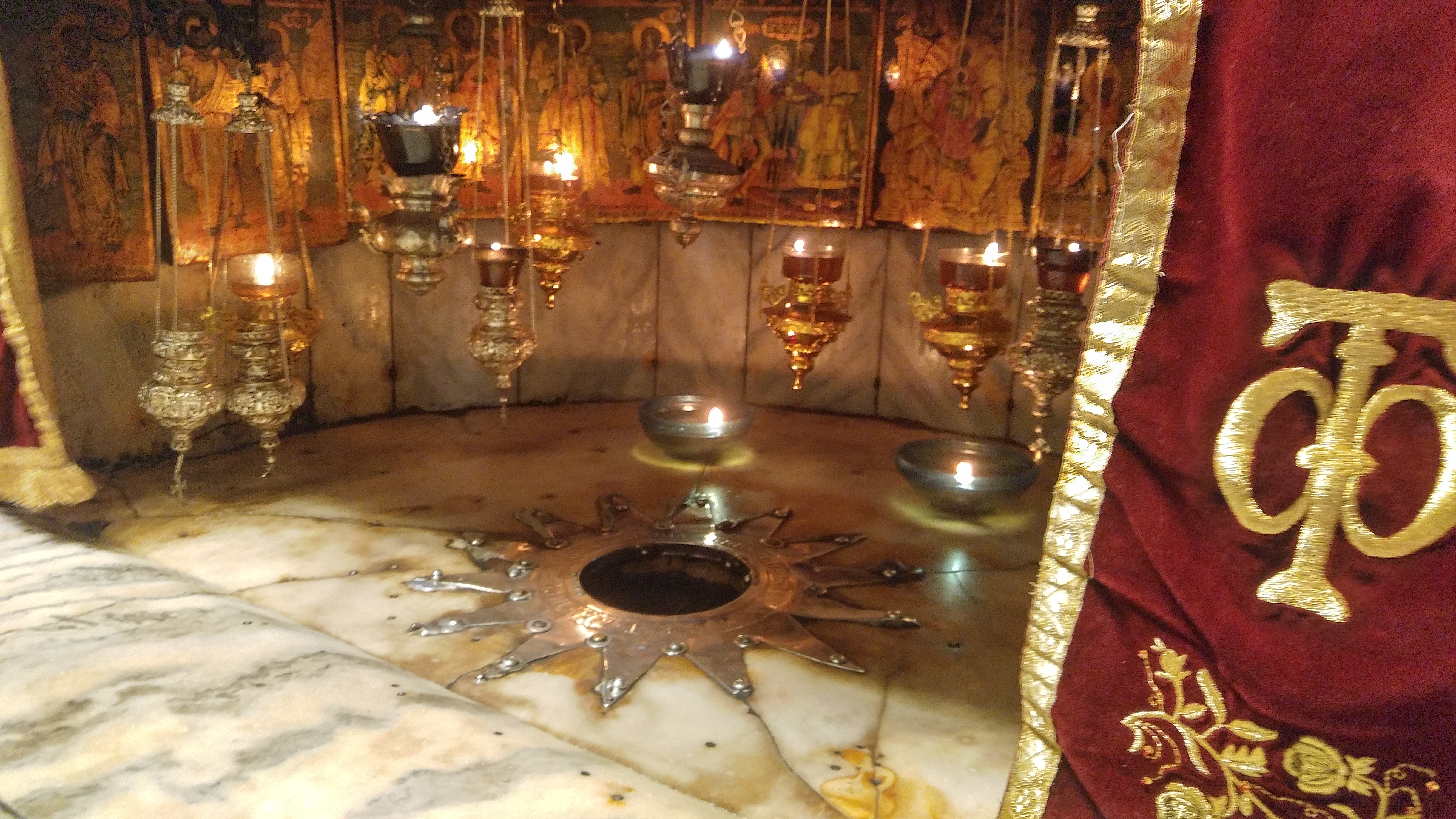
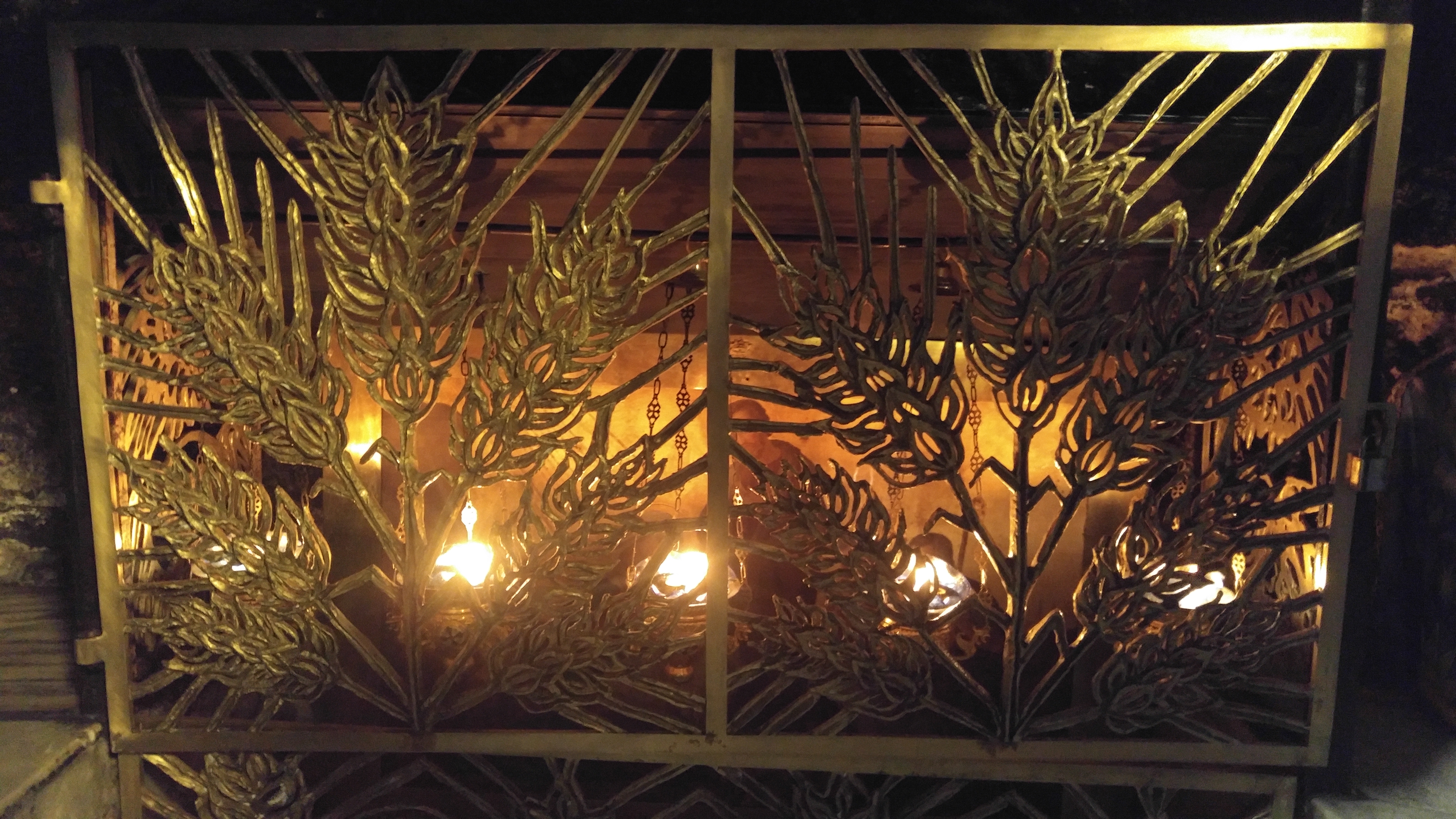
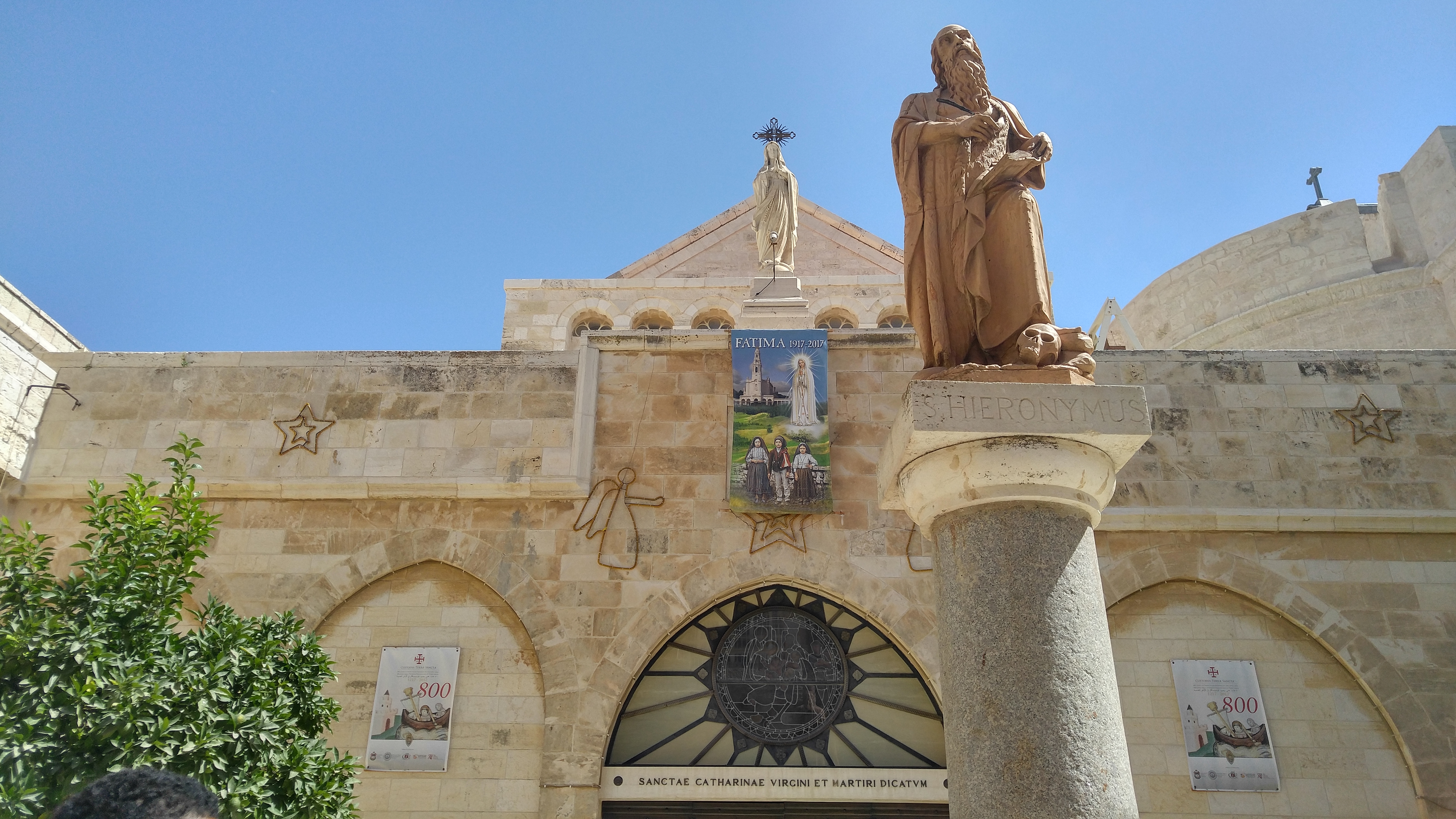
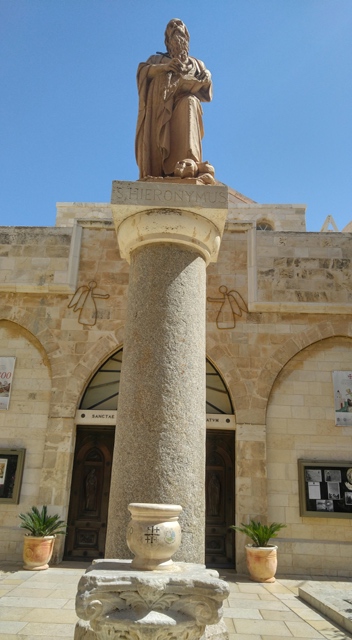
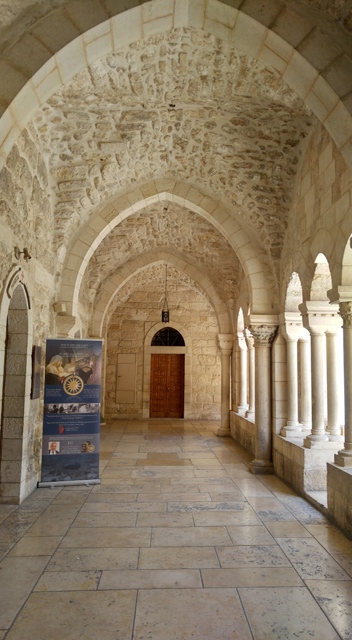
Palmachim Beach
Beautiful fine, white sand Mediterranean beach in Rishon Lezion. There are sun shelters, a life guard station, changing rooms, toilets, and outdoor showers to wash off the sand and salty water from your body. I like the absence of commercial establishments as this makes you feel more attuned to the surrounding nature.
There is a natural island located 250 meters from the shore. This island blocks some of the waves from reaching the beach. But the sea is still usually quite wavy in the afternoon hours. It’s also fun to swim to this island, take a little break on it and make your way back.
Igal said this is his favorite beach. I understand why 🙂
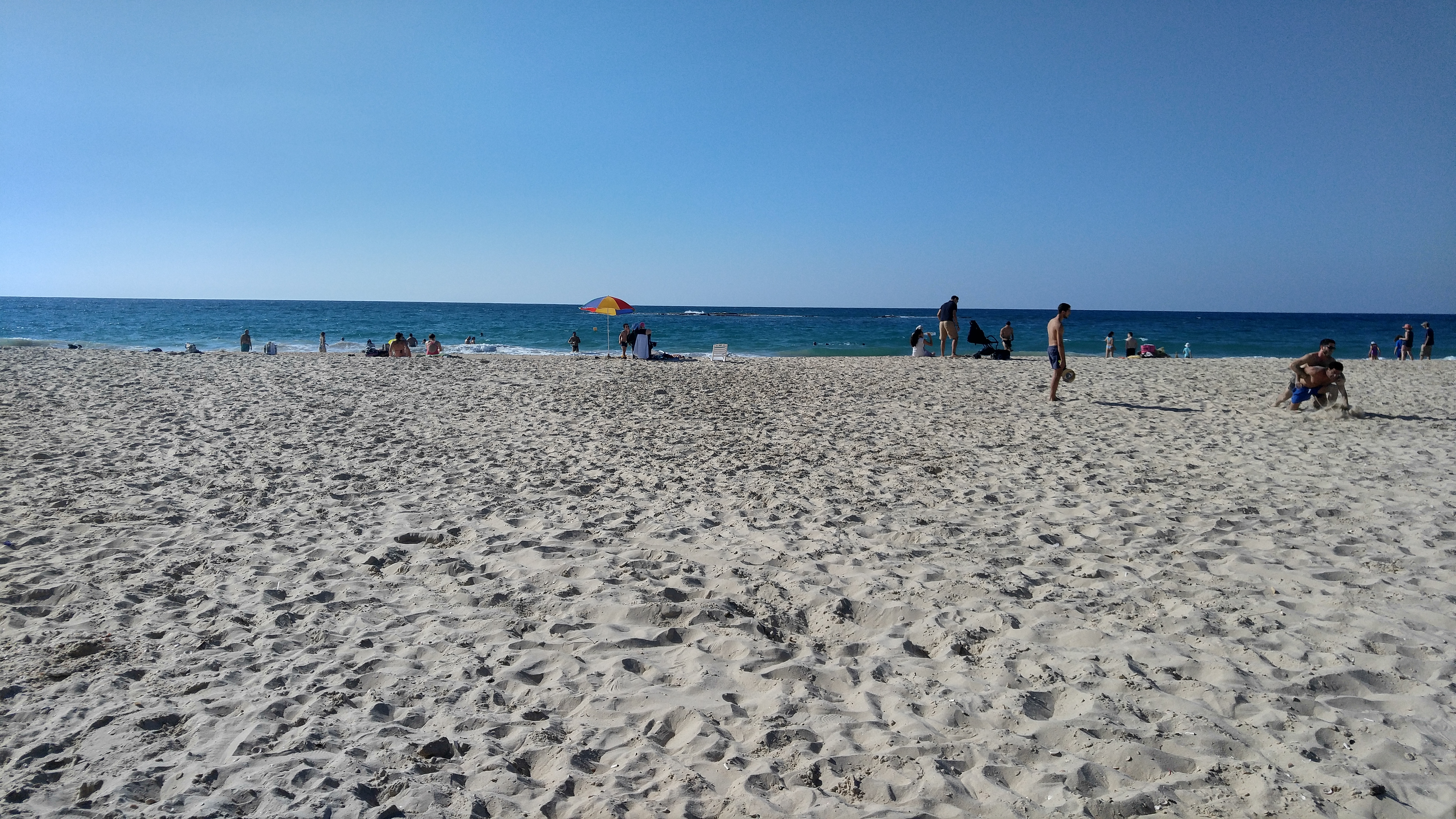
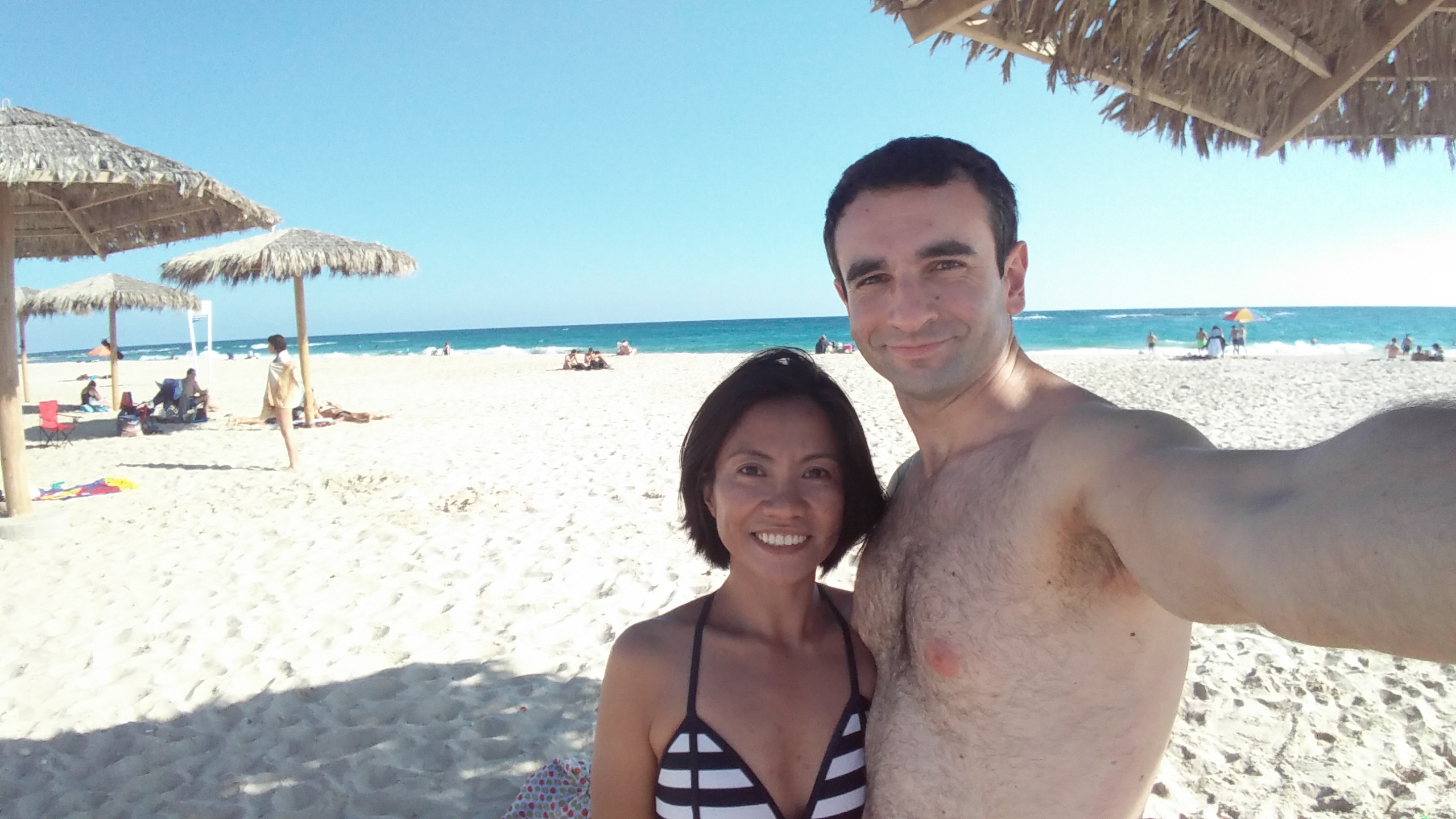
Jaffa
After spending the afternoon enjoying the beach of Palmachim, Igal took me to Jaffa. We walked around Old Jaffa – looking for our zodiac signs among its alleyways, gazing at Tel Aviv from the Abrasha Park, and stopping by the Oranger Suspendu (Suspended Orange Tree) art piece.
We ended our visit with a lovely dinner by the port at his go-to restaurant in Jaffa – Fisherman’s Restaurant.
New Sandeman also offers its tip-based “free” tour of Old Jaffa. We didn’t get to try it because we only learned about it days after our visit to the place.
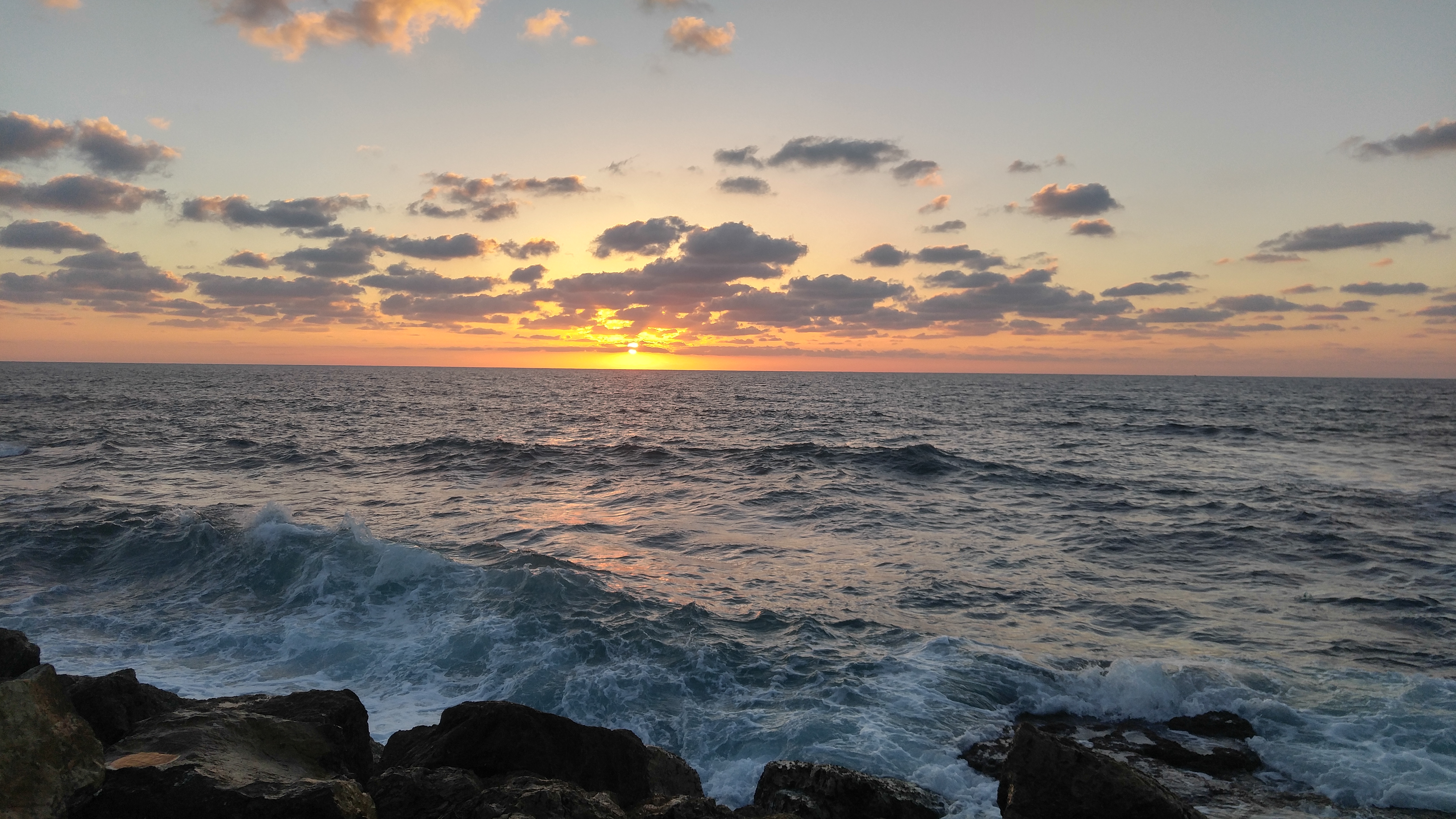
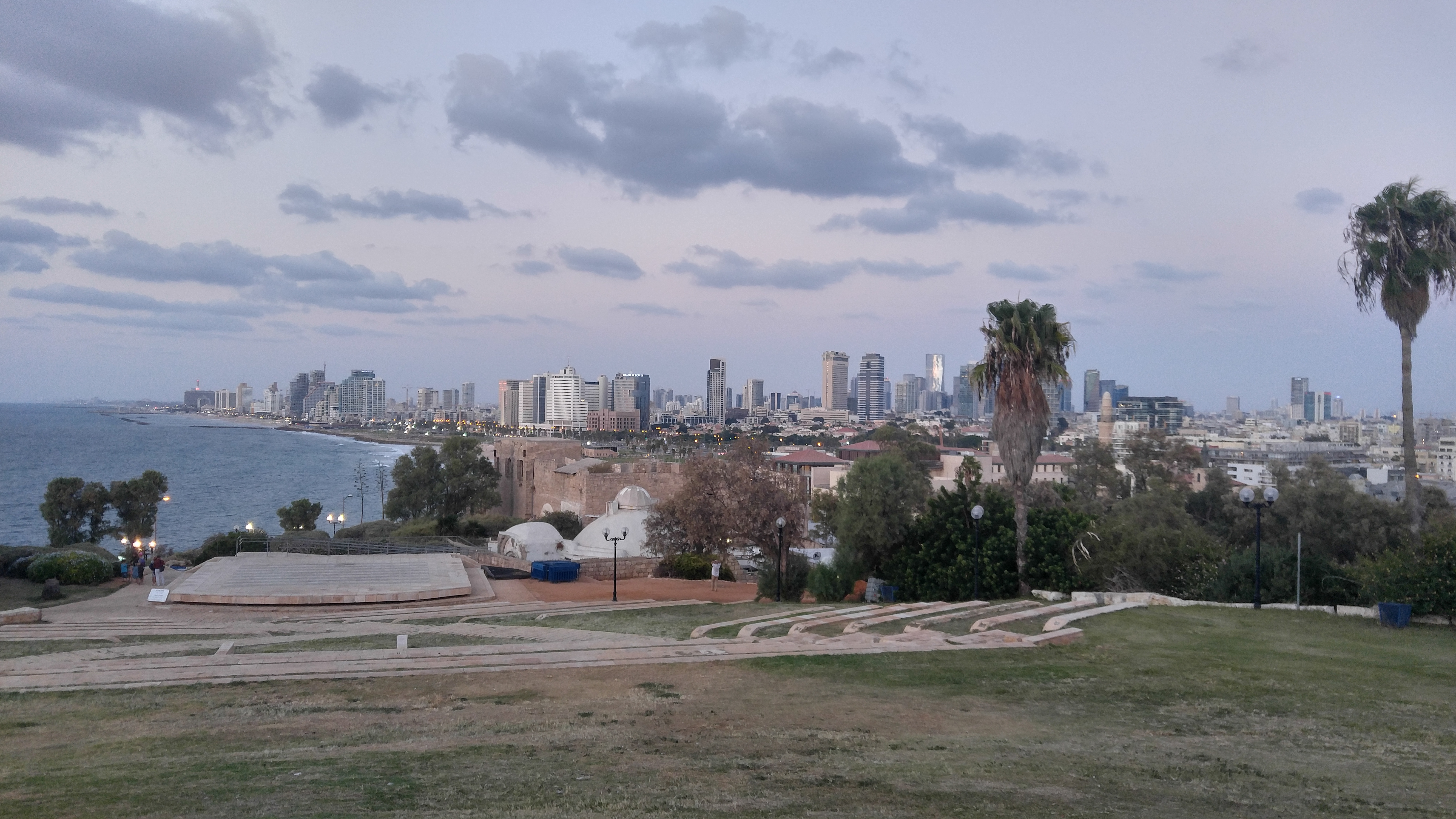
Little Crater / Small Crater (HaMakhtesh HaKatan)
One of the craters in the Negev Desert. From the parking spot, it will take no more than 30 minutes of an easy hike to the viewing point. Don’t be fooled by the name. It may be small RELATIVE to the other craters, but I wouldn’t call it small in itself.


Dead Sea
The place where you can float your day away – the Dead Sea or the Salt Sea. It’s the lowest point on earth at more than 400 meters below sea level. We spent some time here the day before and the afternoon after hiking Masada. We grabbed a spot at Beach Zohar and spent about 30 minutes in the salty water on each visit. Available in the area are public showers, toilets and changing room, sun shelters, lifeguard station, and a small store nearby.
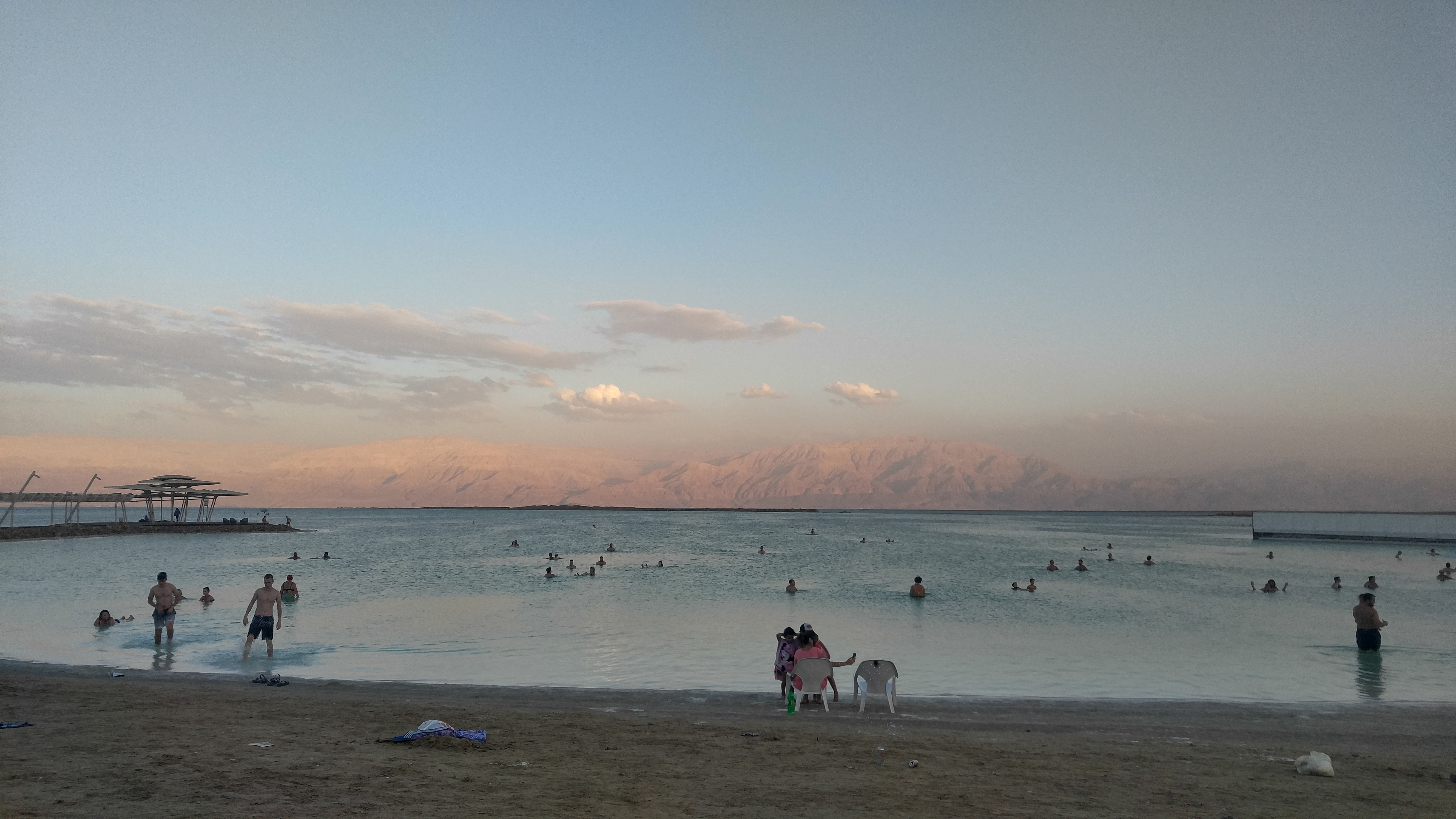
Masada
A fortress in the Judean desert, overlooking the dead sea.
Our goal was to see the sunrise in Masada by hiking its Snake Path. Because of this, our original plan was to spend the night in one of its east side camp sites. Unbeknownst to us, there’s a Tamar Festival event on our camping night and we weren’t allowed to access the east side camping grounds when we got there. We ended up at another camp site about 20 minutes drive away from Masada. To see photos of this camping ground in Google maps, use the search string “Parking Tse’elim River“.
We woke up early the next morning, loaded our things to the car, headed to Masada, and waited for the path to be opened. Access to the Snake Path opens one hour before sunrise. It took us 40 minutes to finish the hike which left us ample time to find a spot to wait for the sunrise. There were tons of people waiting for the sunrise. Some people arrived using the Snake Path on the east side, while some used the Roman Path on the west side. Seeing the sunrise was such a great reward for the 40-minute hike. Physically speaking, the hike is not that hard. Mentally, some parts were a challenge for me since I’m afraid of heights. I feel thankful that I had Igal who patiently encouraged me to move forward.
We spent some time going around Masada after the sunrise, mostly on the side of the Northern Palace. The ruins will give you an idea on how the fortress used to be. The strategic, fortified location that is well-known for the siege between Jewish rebels and the Roman army, called the Masada siege. The account is that, when the Romans were about to breach the fortress walls, the rebels decided to do a mass suicide instead of falling into the hands of the enemy.
After looking at some parts of the fortress, we then decided to take the cable car going down because using the Snake Path will be long and hot as the sun was already up, which wasn’t ideal as there’s another hiking up our sleeves on our next destination.
Entrance fee for adults using the Snake Path is 28 ILS. One-way cable car ride is 29 ILS per adult. Check this page for further details.
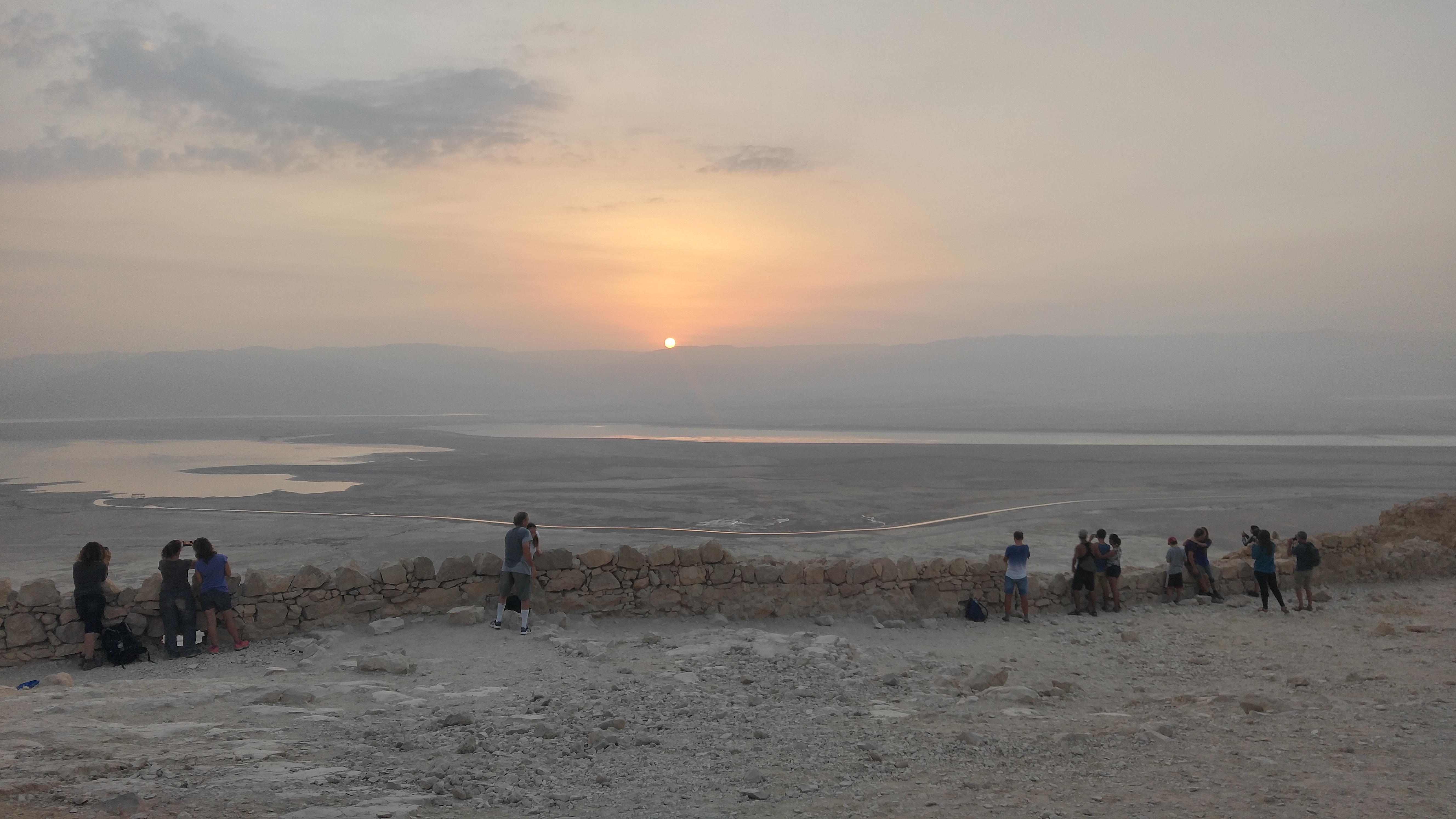
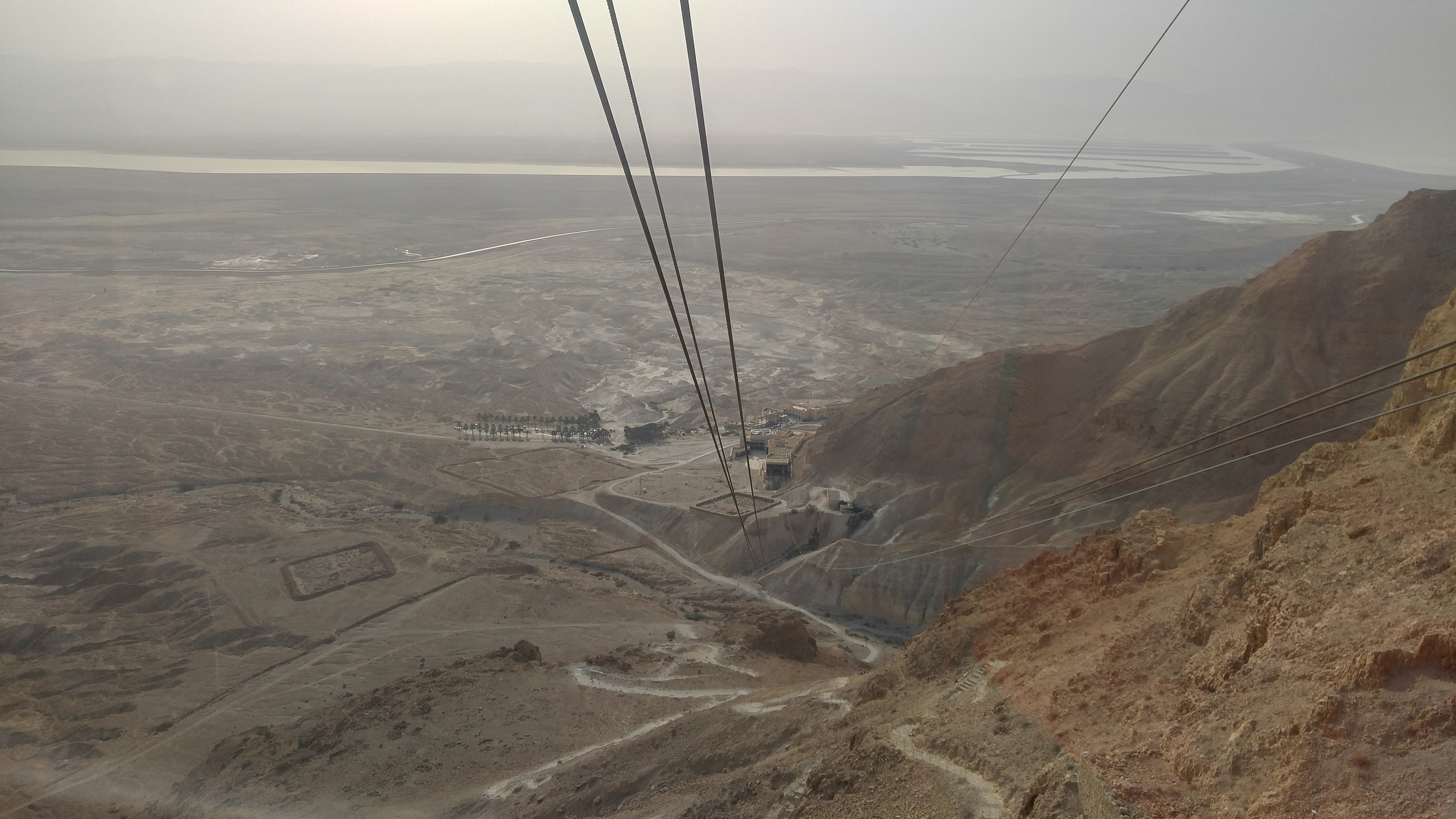
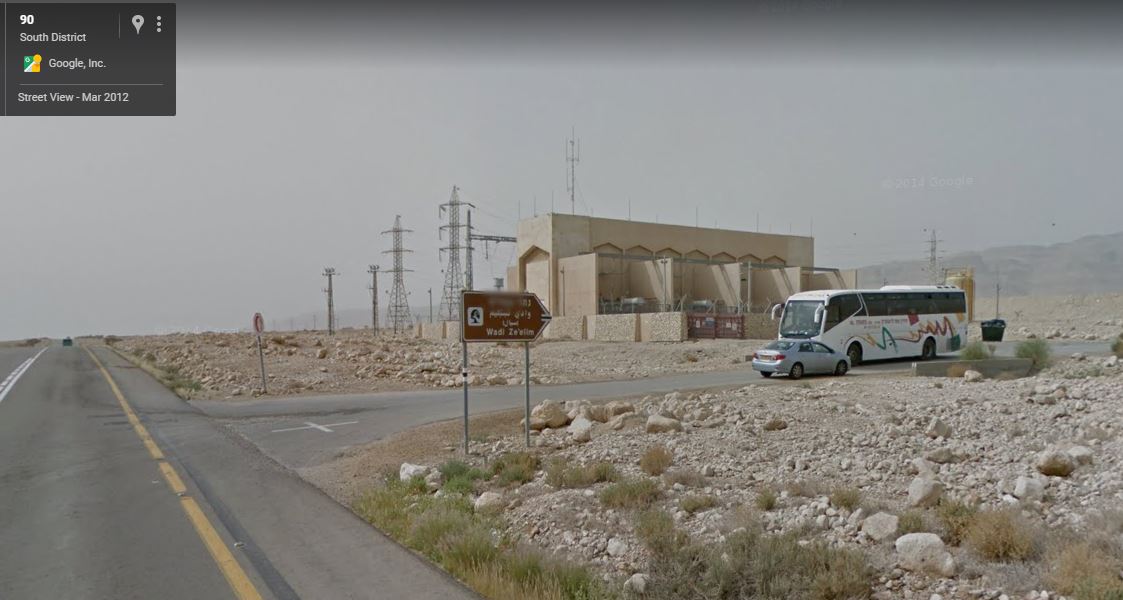
Ein Gedi Nature Reserve
We went to Ein Gedi Nature Reserve after our time in Masada. We picked the Wadi Arugot option on the south side and hiked for about an hour using, whenever possible, the blue trail going to the Hidden Waterfall. We rested there for a while then used the red trail until the beginning of Essenes Ascent and continued with the blue trail to get to the upper pools. Directional arrows are also provided along the way, so it’s completely easy to find your way. It took us another 30 minutes or so to reach the upper pools from the Hidden Waterfall. The waters at Ein Gedi were so clear and refreshing which made the hike worthwhile. It’s hard to resist a dip after hiking on a sunny day. It will cool your body down and make you feel refreshed and ready for the hike back. If you love outdoors and you have the time, visit Ein Gedi! I promise, it will be great!
Entrance fee is 28 ILS for each adult. Click here for the reserve’s brochure which includes the trail map.
Take note of the following timeline reminders if you plan to visit:
You must leave the Hidden Waterfall by 15:00
You must leave the Upper Pools by 15:00
You may begin the trail from the Hidden Waterfall to the Upper Pools no later than 13:00
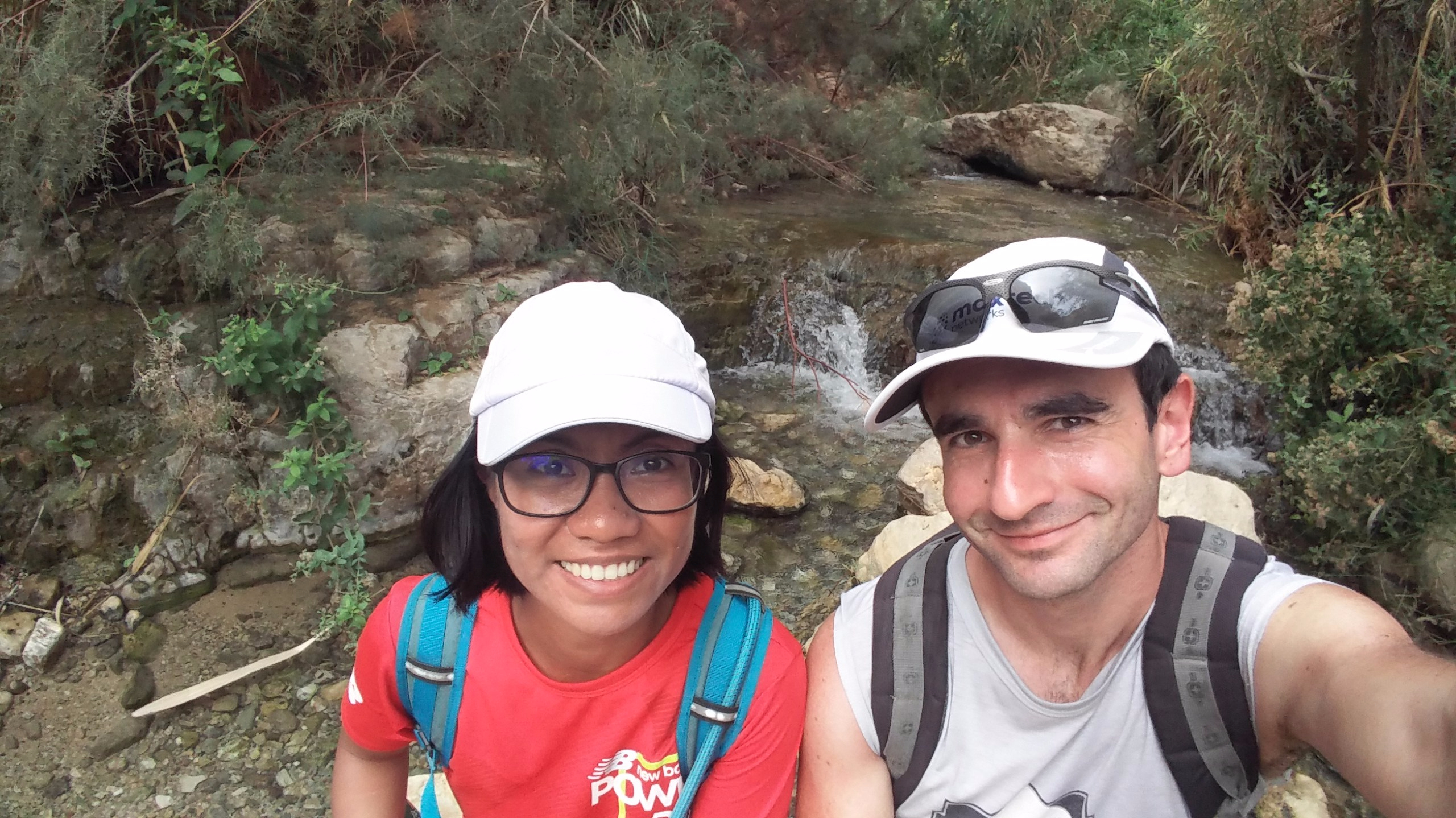
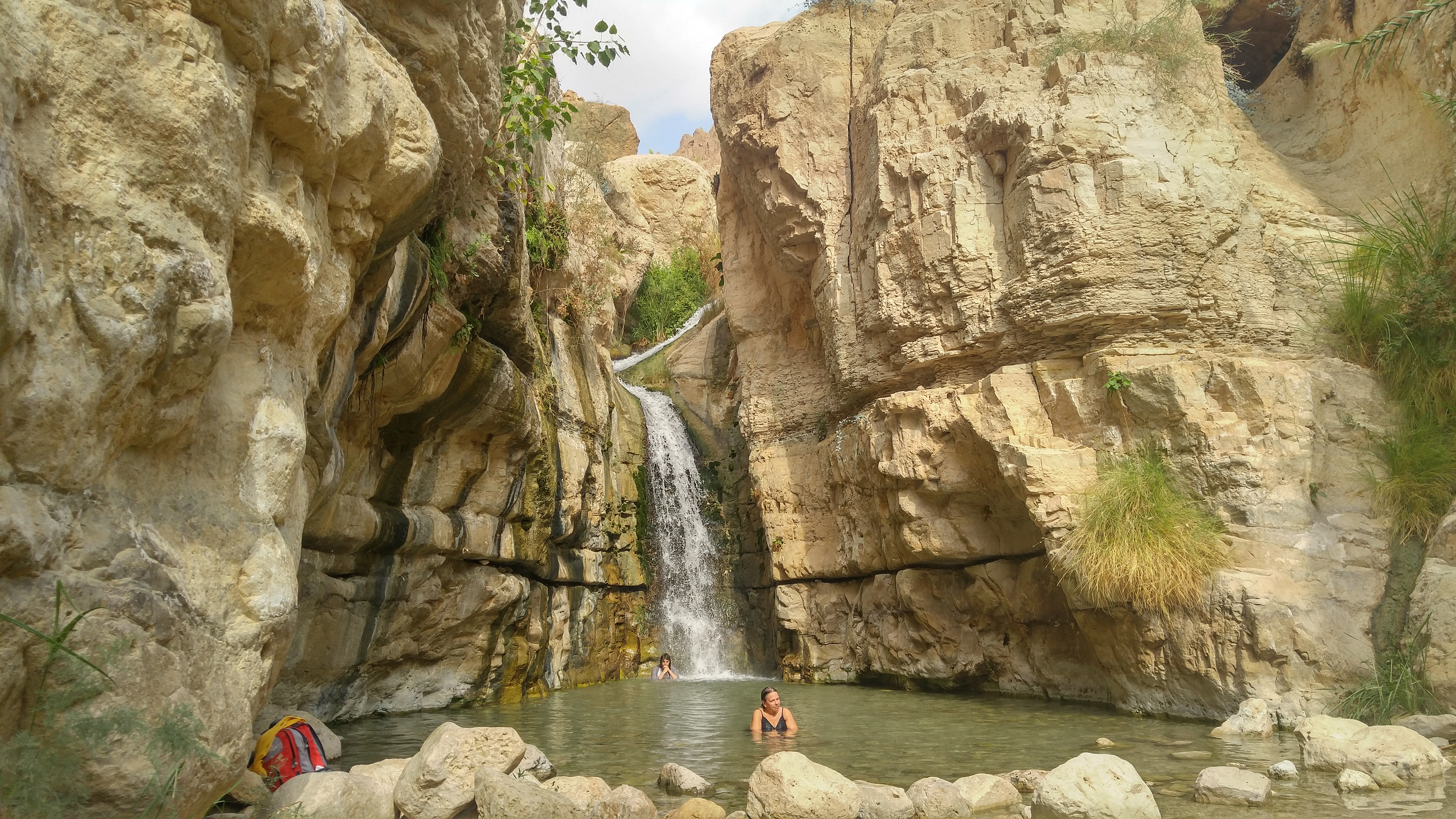
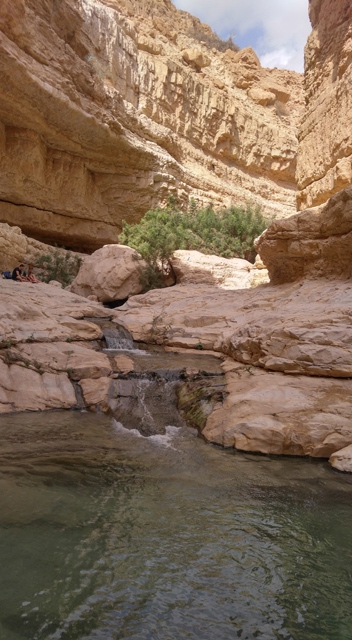
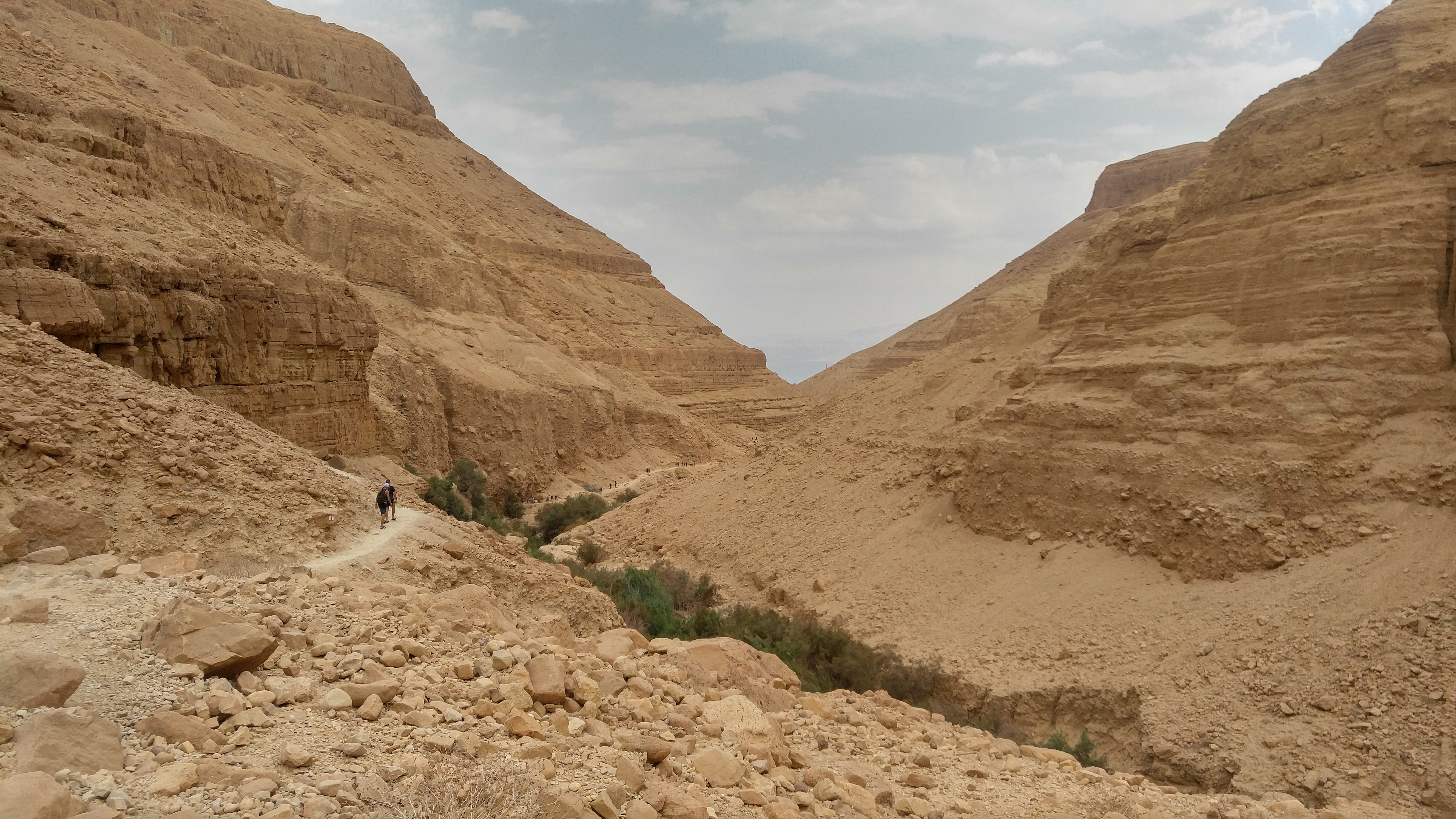
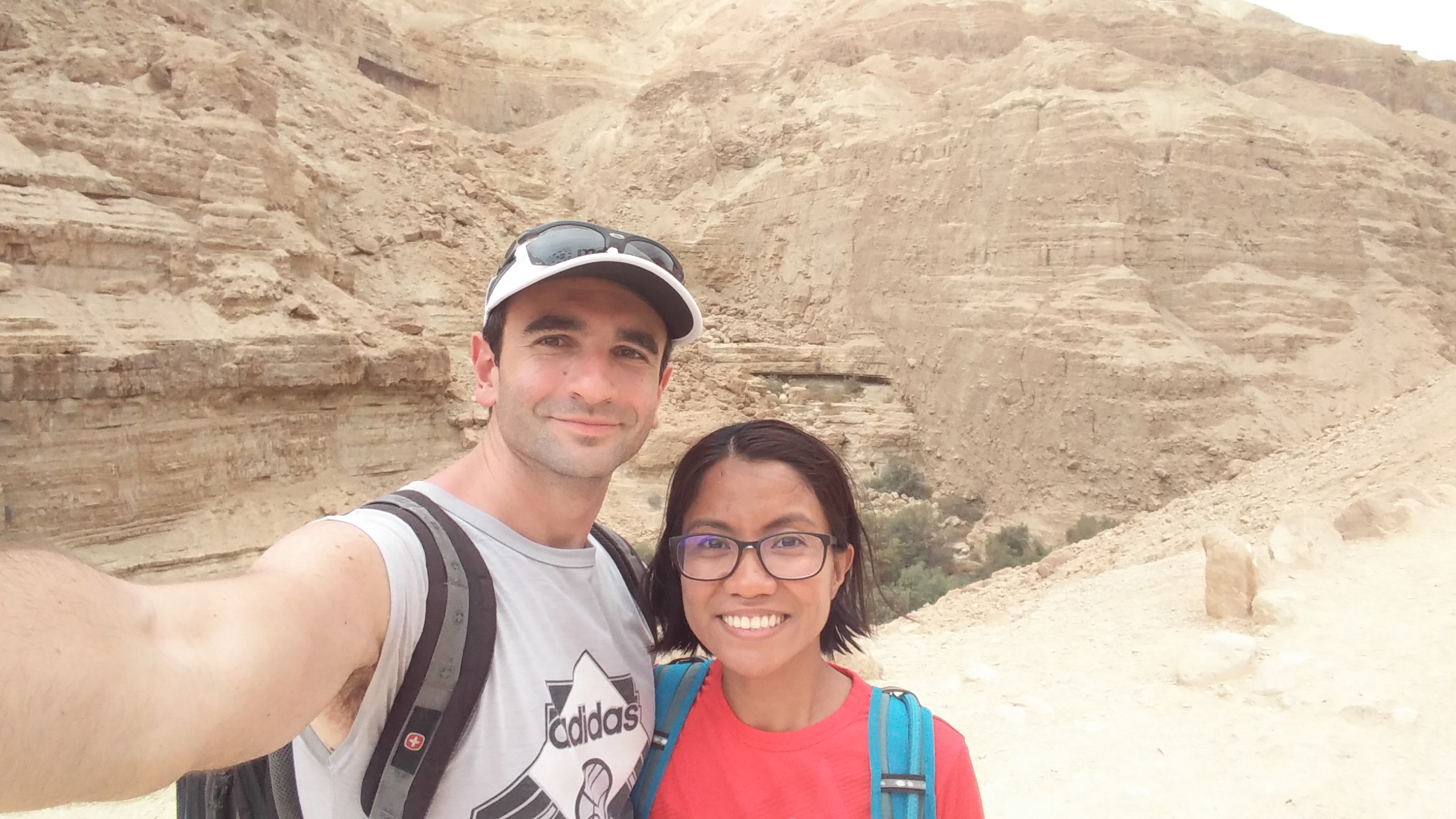
Tel Aviv
I spent one night in Tel Aviv because it’s the pick-up location of the Jerusalem-Bethlehem tour that I booked from Tourist Israel. Igal offered to take me to my hostel from his place after his work. That’s more than an hour of drive per way, so let me take this space to acknowledge one of his many acts-of-love 🙂
He drove me to Tel-Aviv, accompanied me to my hostel for check-in, then took me for a walk within the vicinity. We walked along Rothschild Boulevard, headed to Habima Square, visited Sarona, then had dinner at Porter & Sons.
Igal told me about Sarona’s interesting history. It’s originally a German Templar Colony which was established in 1871. Israel eventually made use of the Templar buildings by converting them to offices of the Army and General Staff. In 2006, restoration project for Sarona was approved which included relocation of five buildings to give way to road expansion. Imagine moving an entire building from one spot to another. How cool is that?!! If you want to see how it was done, this is what I found on YouTube about it, a post by Ilan Shchori.
Going back to Igal’s place the next evening, I just walked from the hostel to Tel Aviv Ha’Hagana train station, purchased a ticket for my destination, and hopped on my train. After 72 minutes, I arrived at my destination and the gorgeous boyfriend was already waiting for me right outside the exit gates. I consider myself lucky 🙂
You can go the Israel Railways’ website to check train schedules and fares. You can purchase tickets from either the self-service ticket machines in the stations – where English language is available – or from the manned ticketing windows. Access to the platforms is possible by using your purchased ticket on any of the automatic ticket gates.
Caesarea
When I saw the movie Ben-Hur on HBO after my trip to Israel, the chariot race reminded me of Caesarea and its hippodrome.
This is a city rebuilt for grandeur by King Herod the Great and renamed after the Roman Emperor, Caesar Augustus. Seeing relics scattered along the park can give you an idea on how the place used to be. However, if you want a more graphic presentation of its previous magnificence, do visit the park’s cinematic display of Caesarea’s history – the “Caesarea Experience”. I find it worthwhile. We spent about two hours exploring Caesarea, including the visit to Caesarea Experience. It can take longer if you’d like to explore every inch of the place.
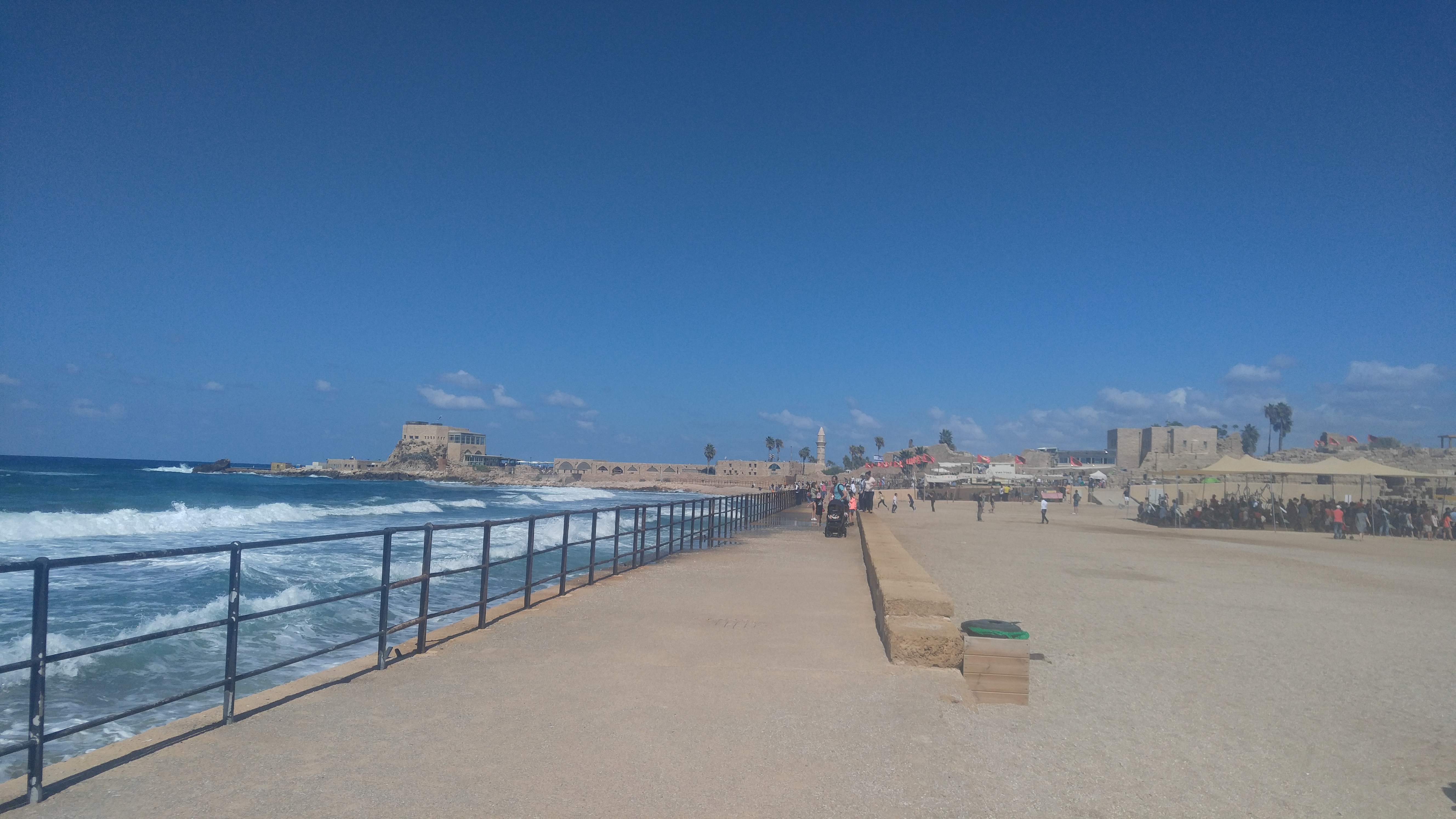
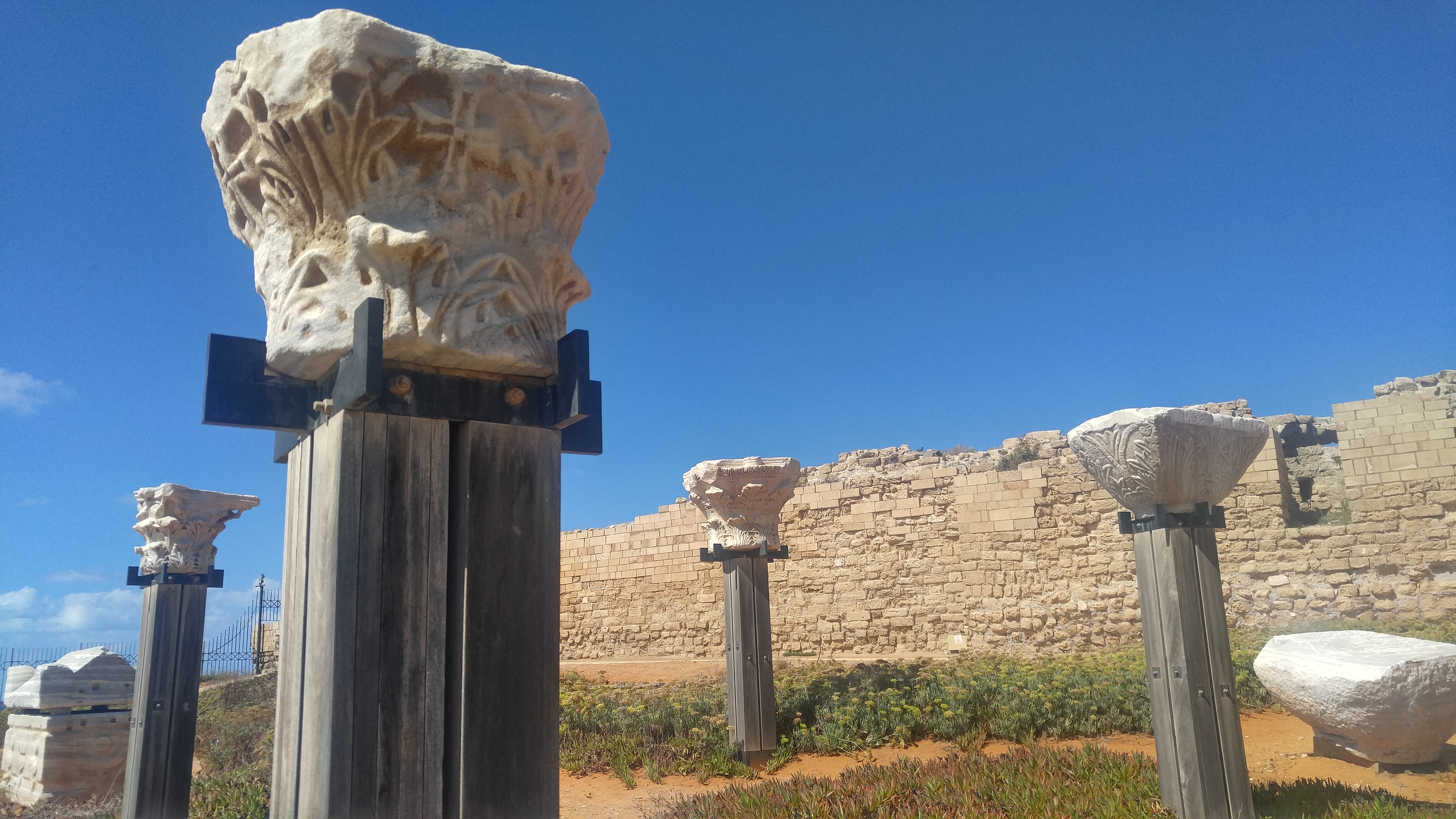
Haifa Ba’hai Garden
The pretty garden in Haifa. Seeing it from the road as Igal drove towards it, my mind was screaming “WOW”! Okay, maybe I also verbalized it since he asked me if I wanted him to find a parking spot along the road during our approach. I told him I’m alright and he can just go to where he planned to take me. Because we arrived in the afternoon, we only got to appreciate its beauty from the outer gardens. The inner garden is open to visitors from 9am to 12 noon only. We parked and spent a few minutes walking around the outer garden at the 80 Hatzionut Avenue gate. We then drove again and parked along the street and walked towards the 61 Yefe Nof gate where we spent most of the time appreciating the garden’s beauty from the viewing balcony. Even if we weren’t able to be at the inner gardens, it was great to have had the opportunity to admire it from the road below and the viewing balcony above.
When we thought we had enough of the garden’s beauty and before going back to the car, we went to the nearby park and spent some time walking along Louis Promenade and sitting as we stare into the Mediterranean Sea while talking about our day and some random things.
Oh, and expect to see couples having their wedding photos taken in the garden. We saw more than two during our visit.
To learn more about the gardens and the Ba’hai faith, check out their official website.
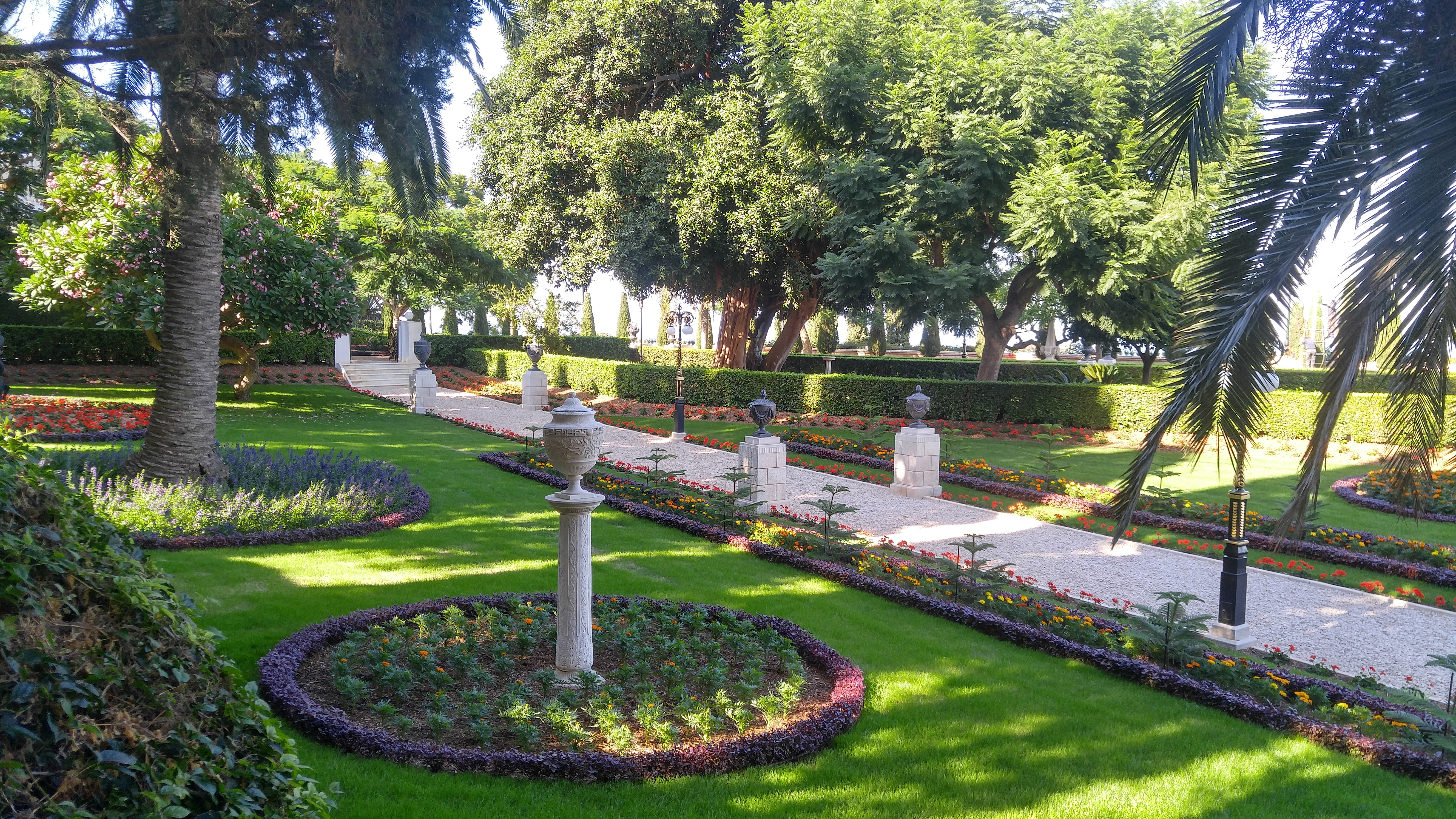
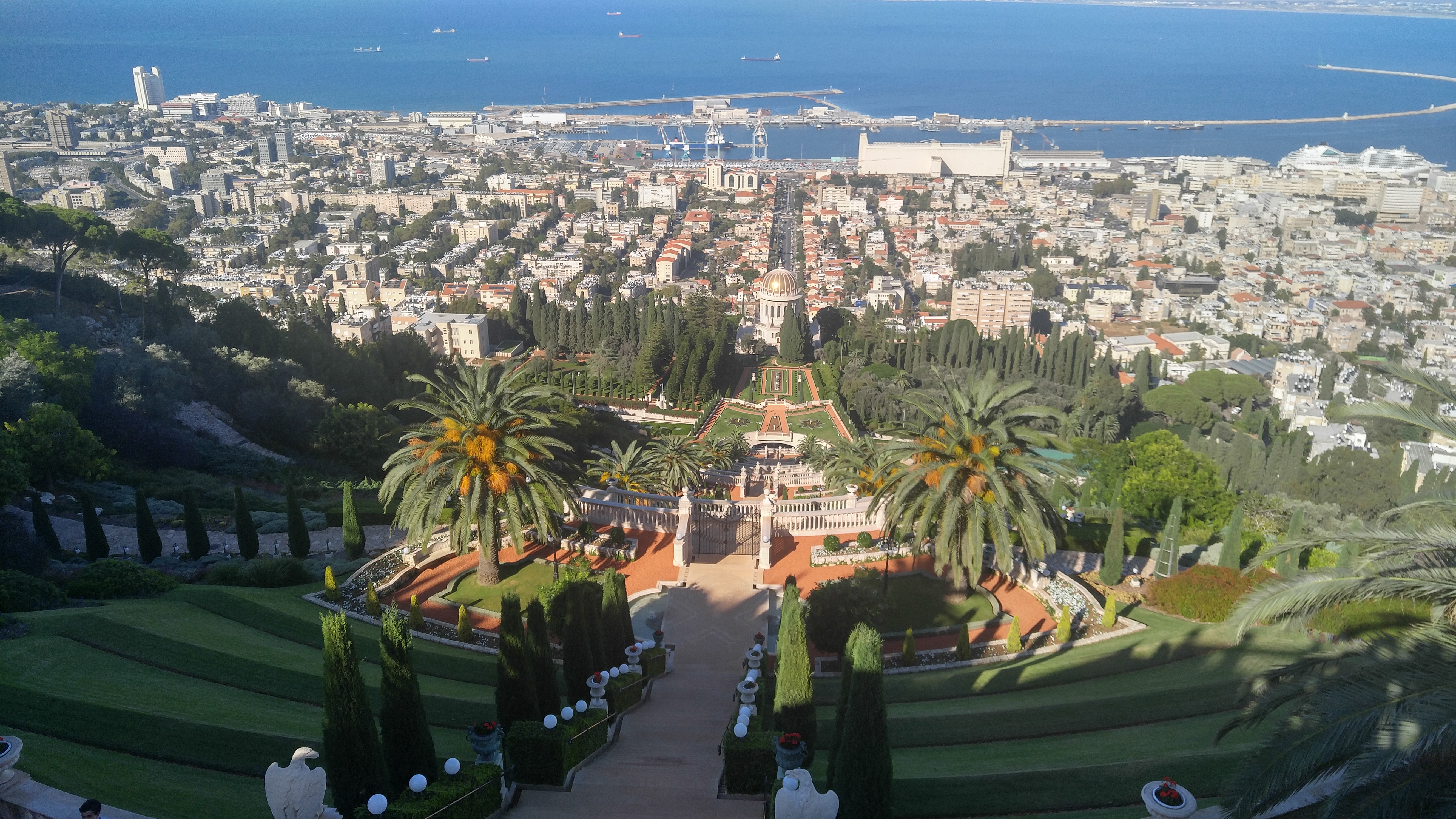
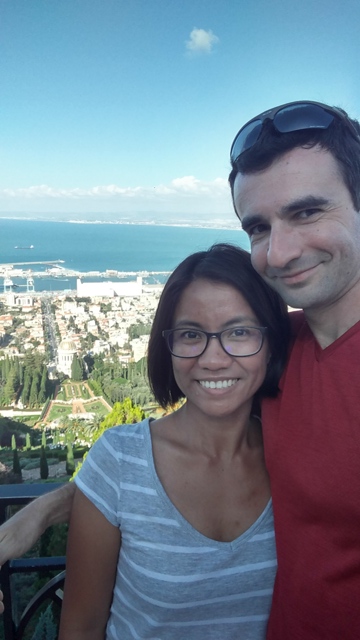
Marina of Herzliya
We scheduled an escape room activity with Igal’s friends and we had some time to kill before it so Igal brought me to the marina of Herzliya. We walked along the entirety of its boardwalk and watched the yachts going in and out of the port.
The beginning of the boardwalk is situated beside the Stars Beach, the second beach I’ve seen in Israel. I told Igal that they have good beaches in Israel – the sand is fine, the shore is spacious, the water is not cold (at least, during my visit), the water is clean, and the beach is accessible to anyone.
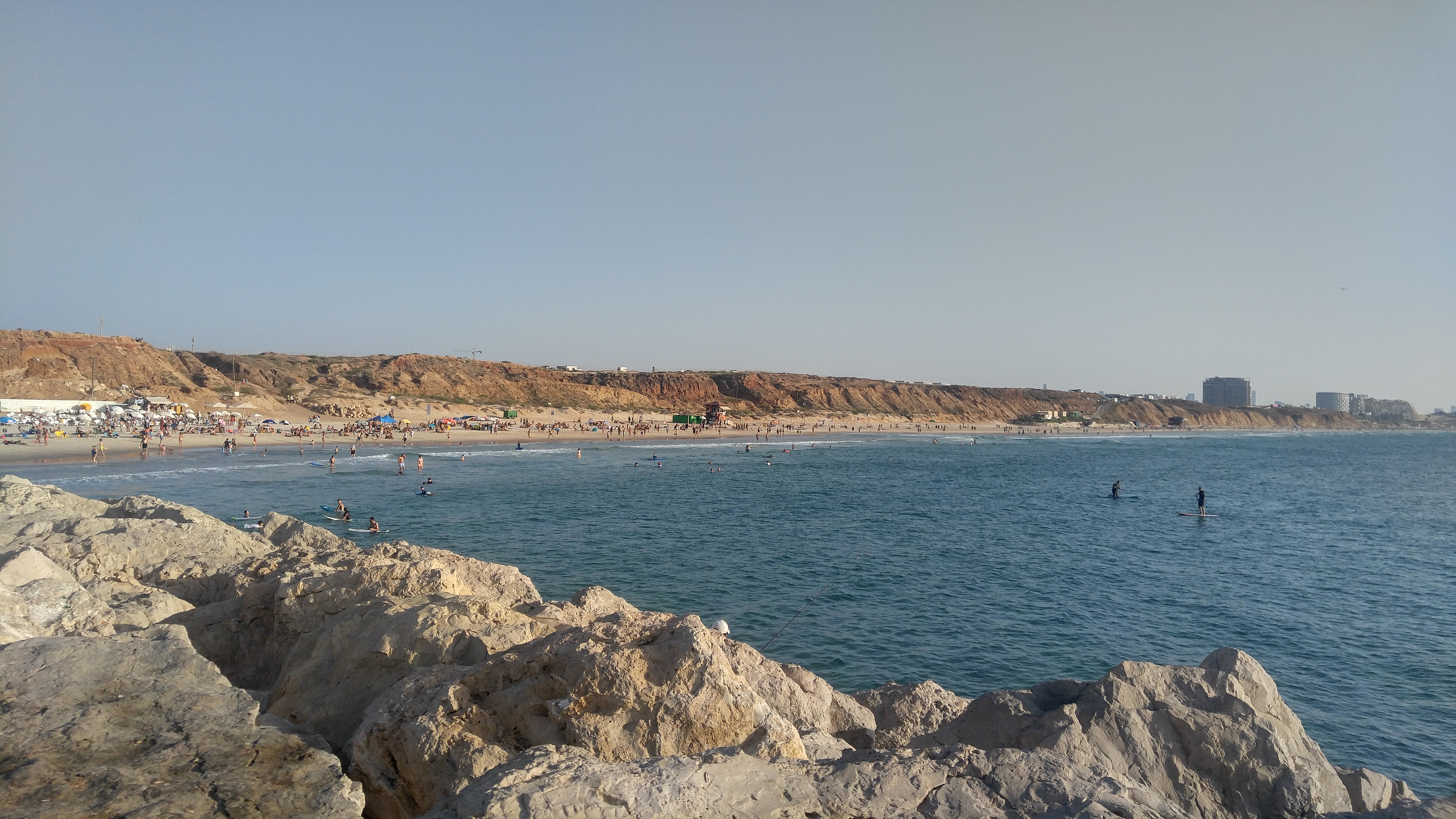
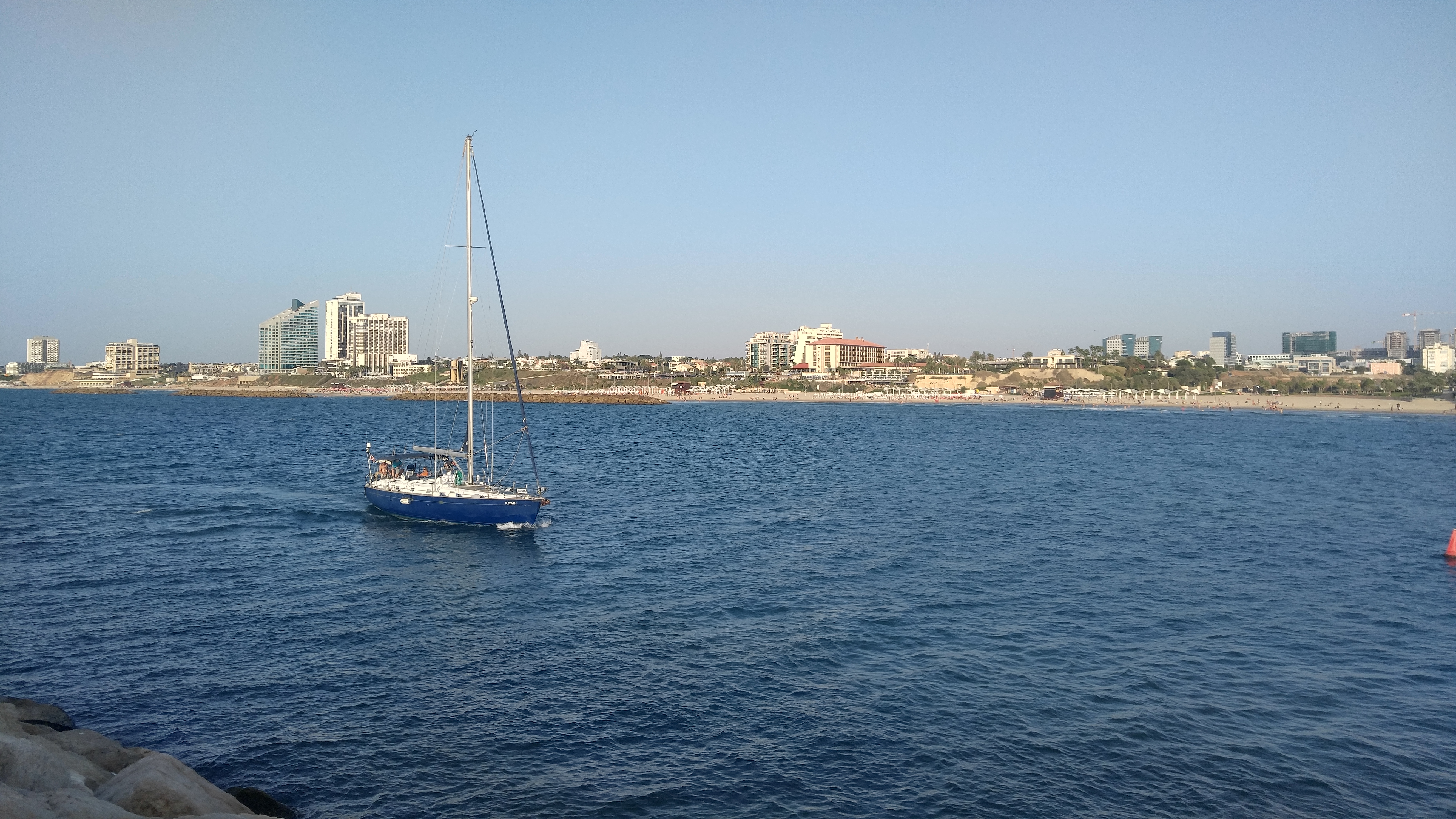
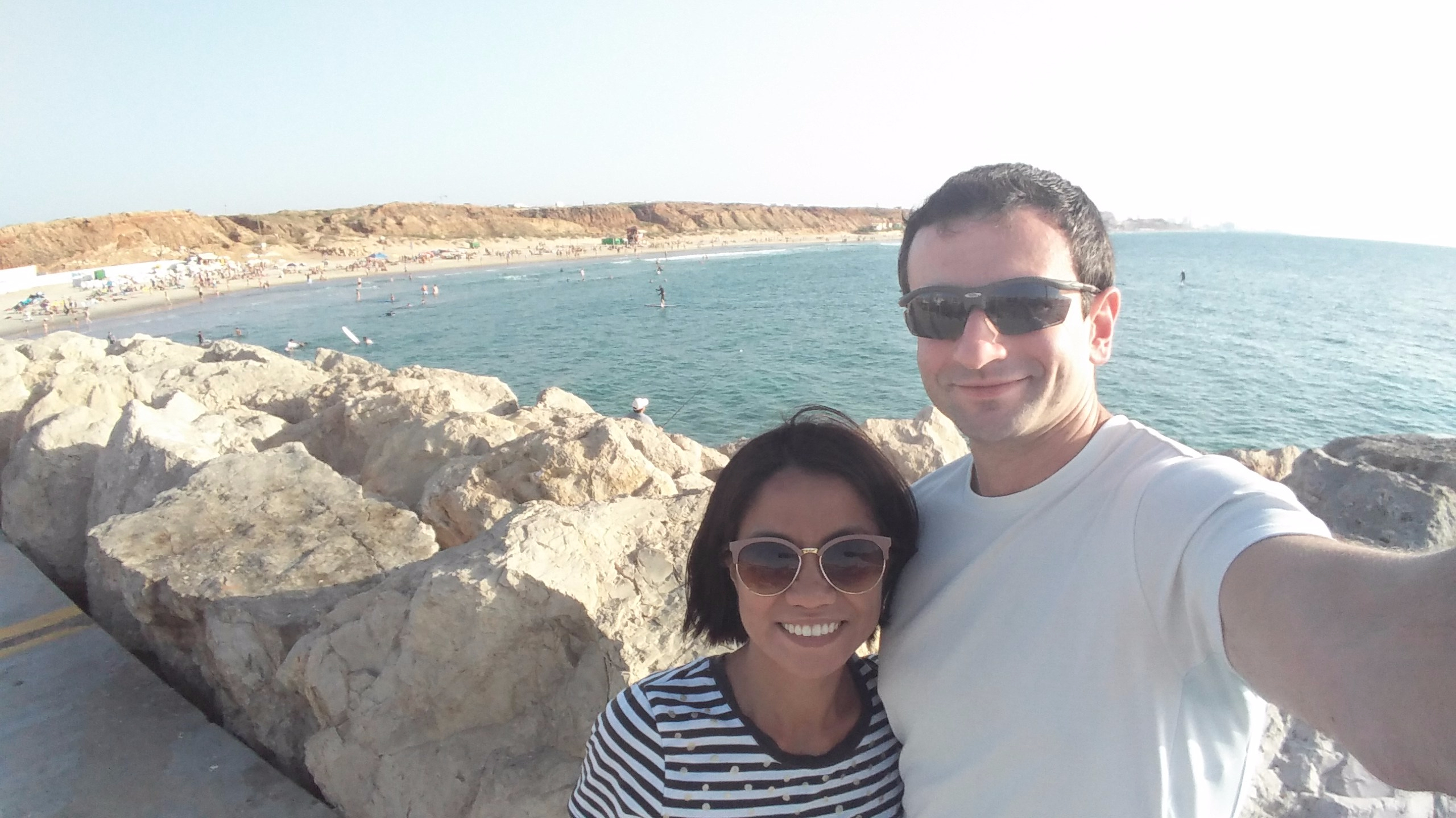
Yehudiya Nature Reserve (Upper Zavitan Canyon)
A nature reserve in the Golan Heights. There’s a total of 11 trails in the Yehudiya Nature Reserve pamphlet, with varying degree of difficulty. We did the short trail to the Upper Zavitan Canyon which starts from the parking lot near the Sheik Hussein Ruins. It’s a circular one starting with the blue trail, then turning to the black trail, then the red trail to the Zavitan Hexagon Pools, a detour to the blue trail going down to the Zavitan waterfall, and then back to the parking lot with the blue trail. The blue trail is shown as purple in the map, but uses blue as marking along the trail. This circular trail is marked as medium, but Igal and I agreed that it was easy for us.
There are two pools in the Zavitan Hexagon Pools. Visitors can take a swim in these pools but keep in mind that there are no lifeguards around, so be careful.
From the Zavitan Waterfall viewing point, visitors have the choice to take the trail going back to the parking lot or take a bit of detour and hike down to the bottom of the waterfall and its pools. It’s not hard nor too long to go down the waterfall, so I suggest you do it. You can spend some time there resting and/or swimming. After ascending from the waterfall, the trek back to the parking will be on a mostly flat blue trail.
Our visit to the Upper Zavitan Canyon took about 3 hours in total which includes trekking, resting, and swimming. Before leaving the area of Golan Heights, we had a late lunch / early dinner at Golan Brewery.
Visit this page to learn more about the reserve.
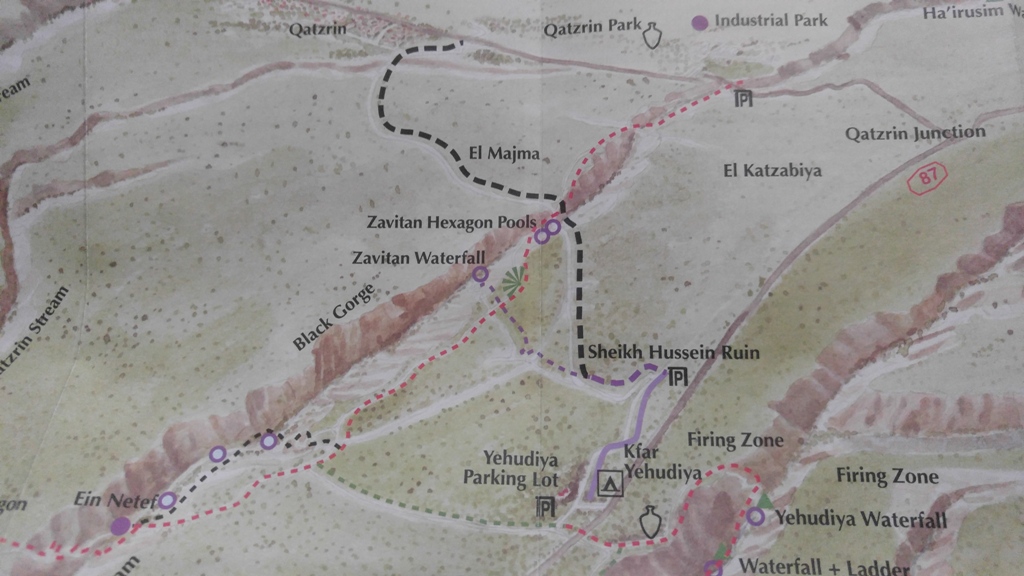
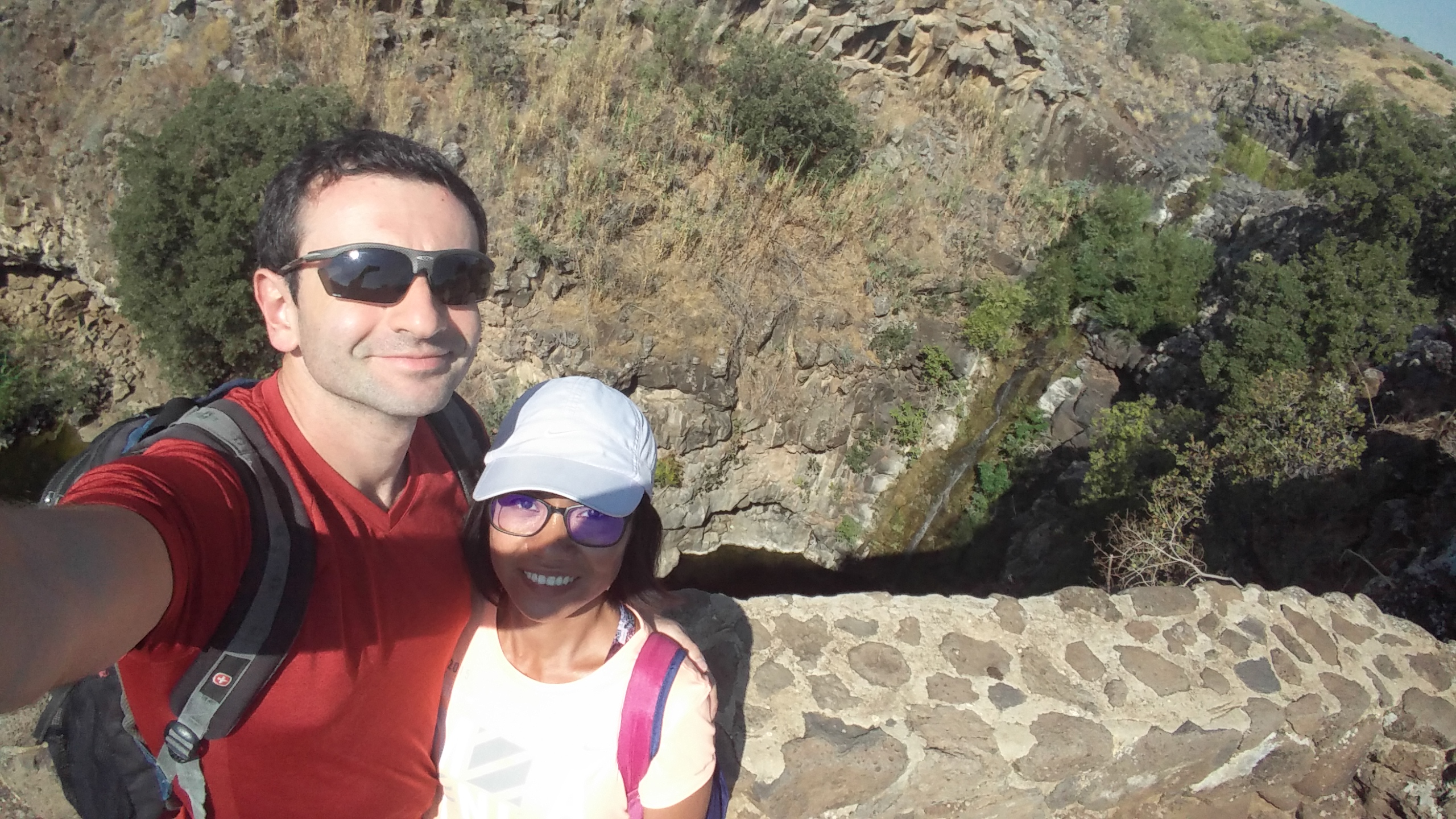
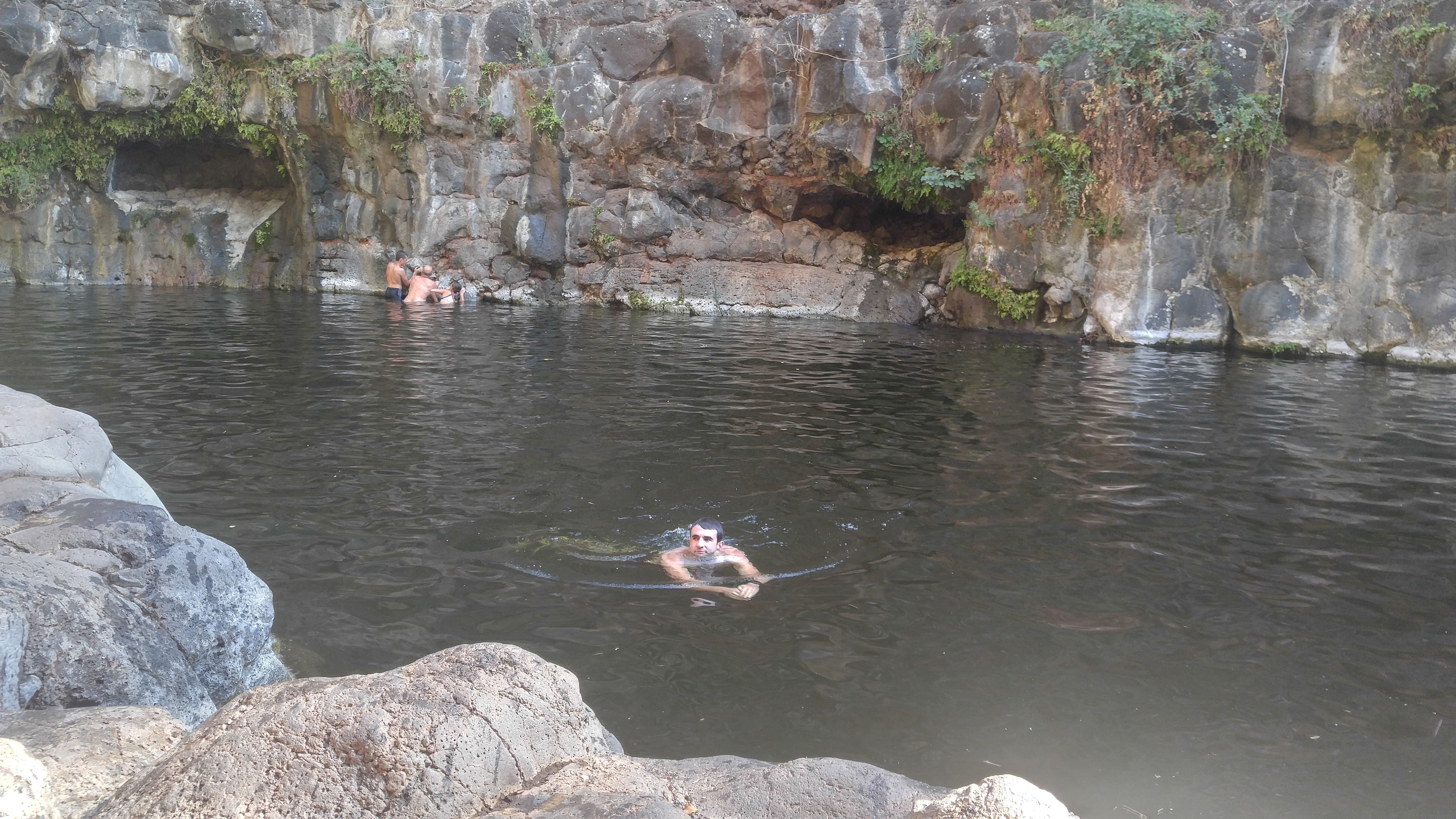
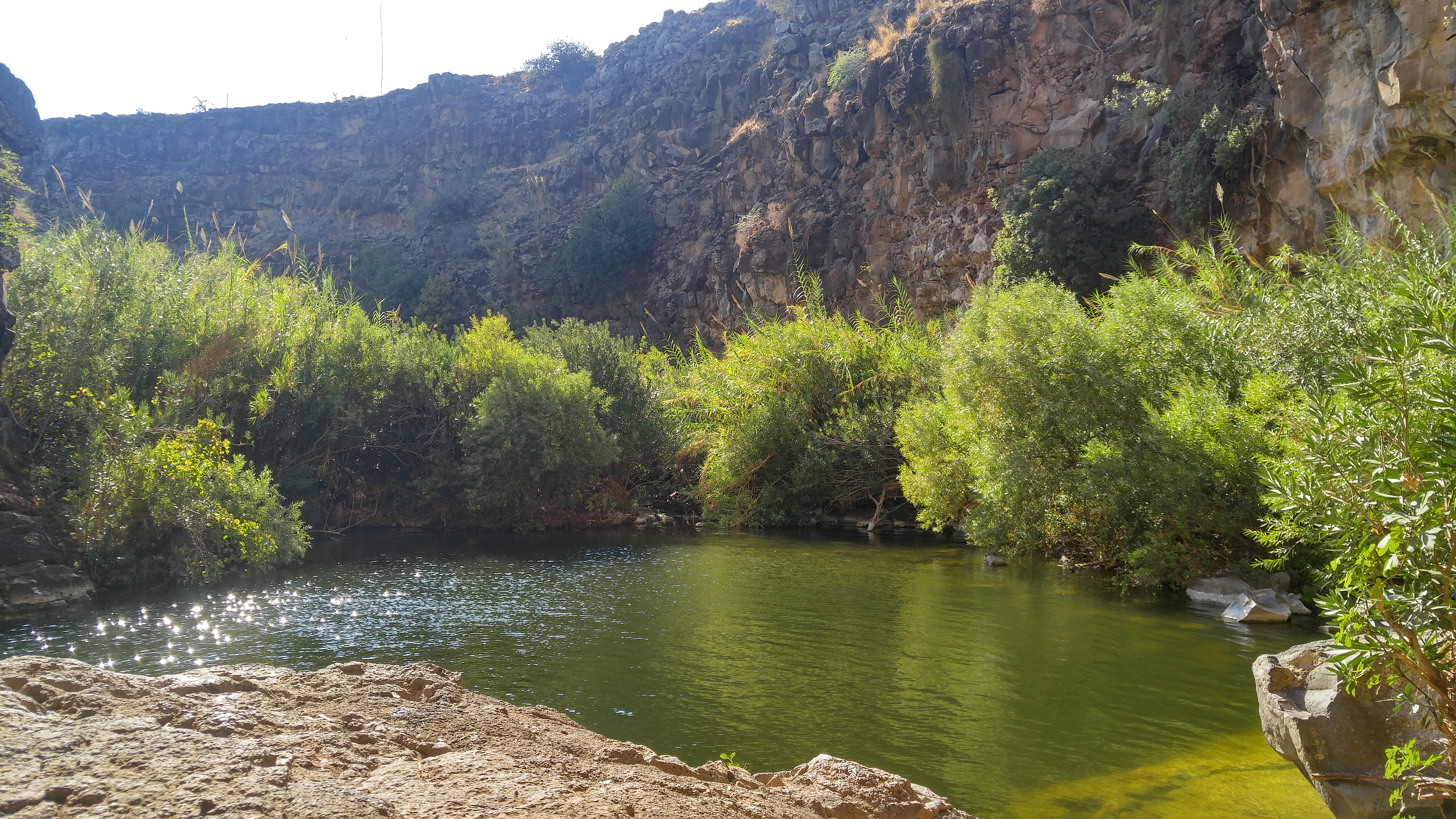
Kinneret / Sea of Galilee
We booked an airbnb near the Sea of Galilee and was planning to take an evening dip after our hike in the Golan Heights. However, we enjoyed the comforts of our bed so much that we decided to forego the beach and just stay-in to binge-watch season one of “Shooter”. Our accommodation has a lovely view of the lake, anyway. We also had a great view of the lake on our way to Hamat Gader the next day.
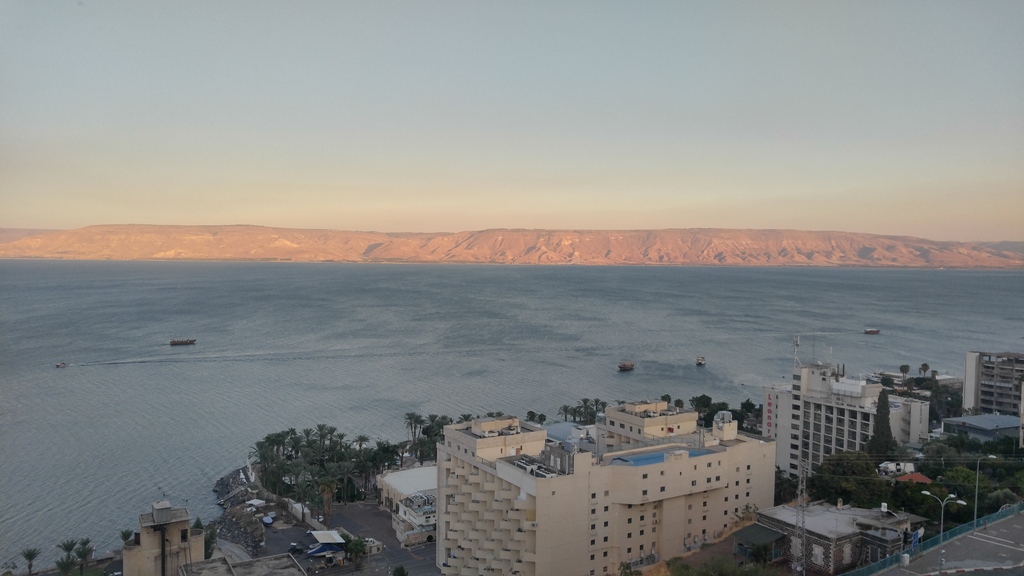
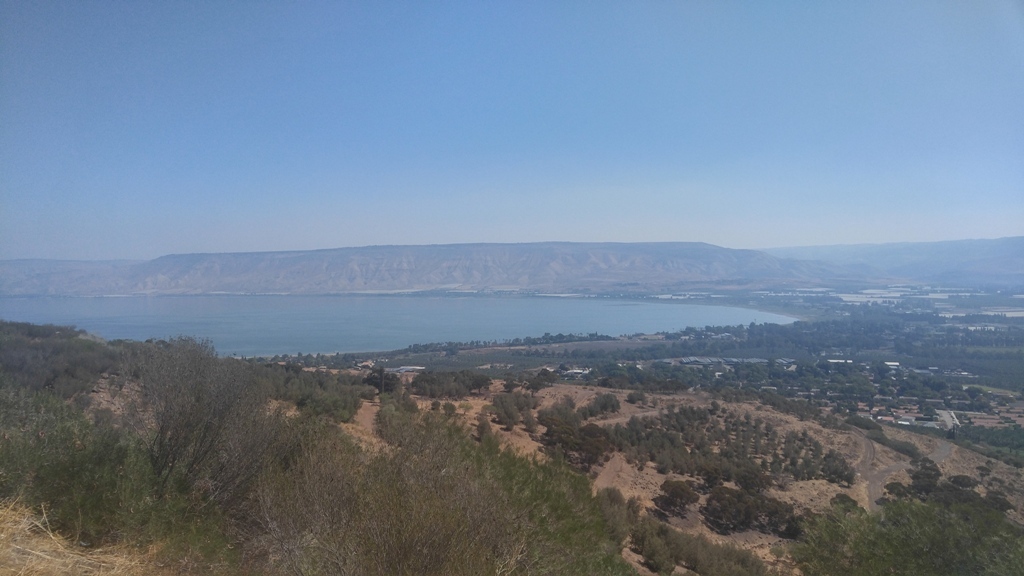
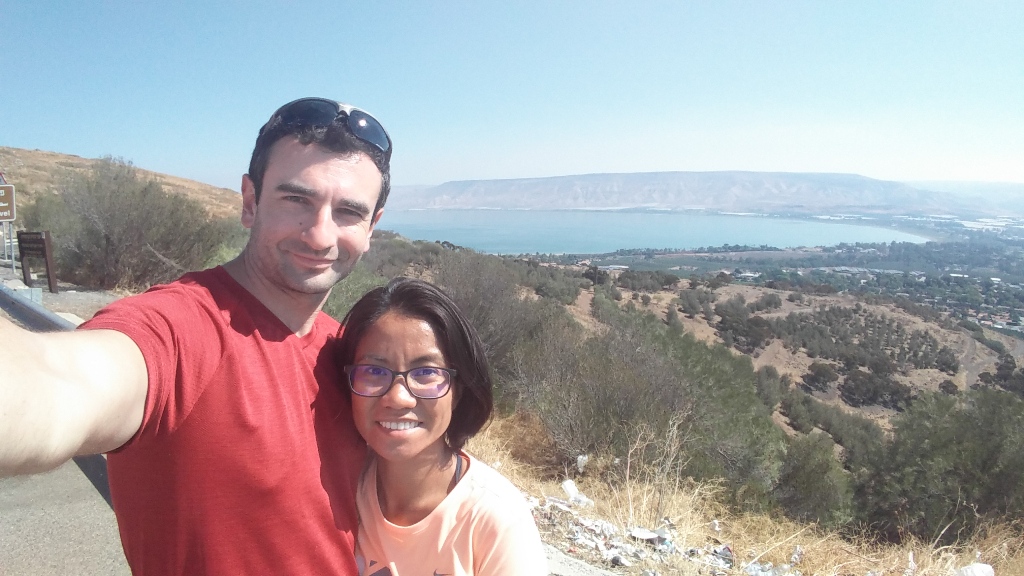
Hamat Gader
Israel’s hot springs located north of the country, near the Sea of Galilee. We went here during a holiday and it was pretty crowded with most visitors comprised of families.
There are camping grounds as well as a boutique hotel inside the property, but spending a night there is not necessary to enjoy the place.
Check-out Hamat Gader’s official website for more details.
Tel Beer Sheva National Park
An archeological site located east of Beer Sheva city. The site shows an ancient community system during Biblical times with remnants indicating gates, walls, storage areas, water systems, residential buildings, public areas, and more. The recommended route will take you to the water system as you exit. This consists of a 17-meter deep shaft with stairs going down, a reservoir, and a feeder channel. It was an amazing end to our visit to this Tel.
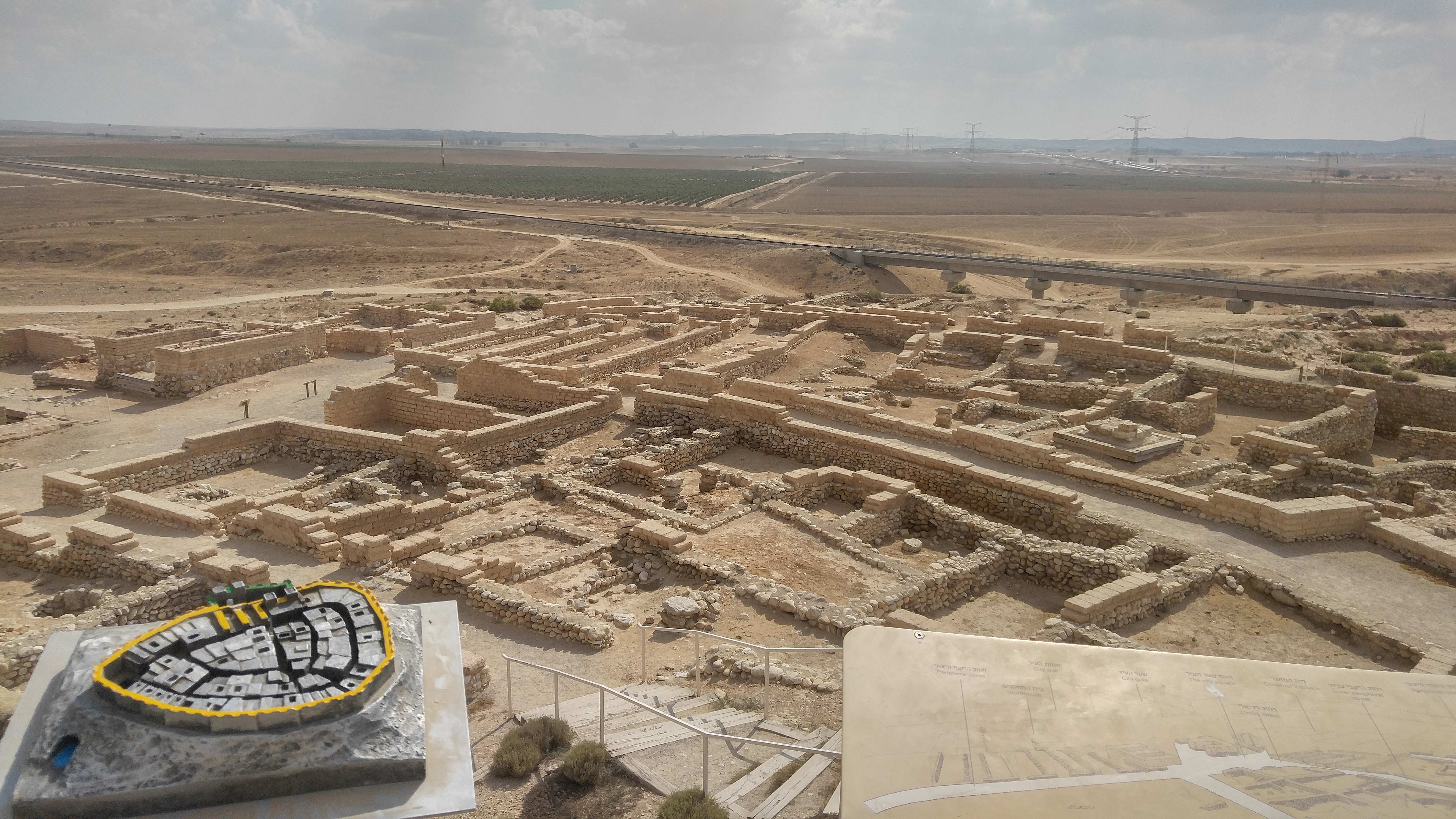
Mount Sodom
We visited the place on our way to the Dead Sea. We first checked-out the Ladders Ascent along route 90 but it looked high for me considering that we plan to do some hiking the next morning. Igal tried to look for another way to go to the viewing point and found a dirt road from route 90 which led us to the Amiaz Plateau and then to a red trail that goes to the viewing point.
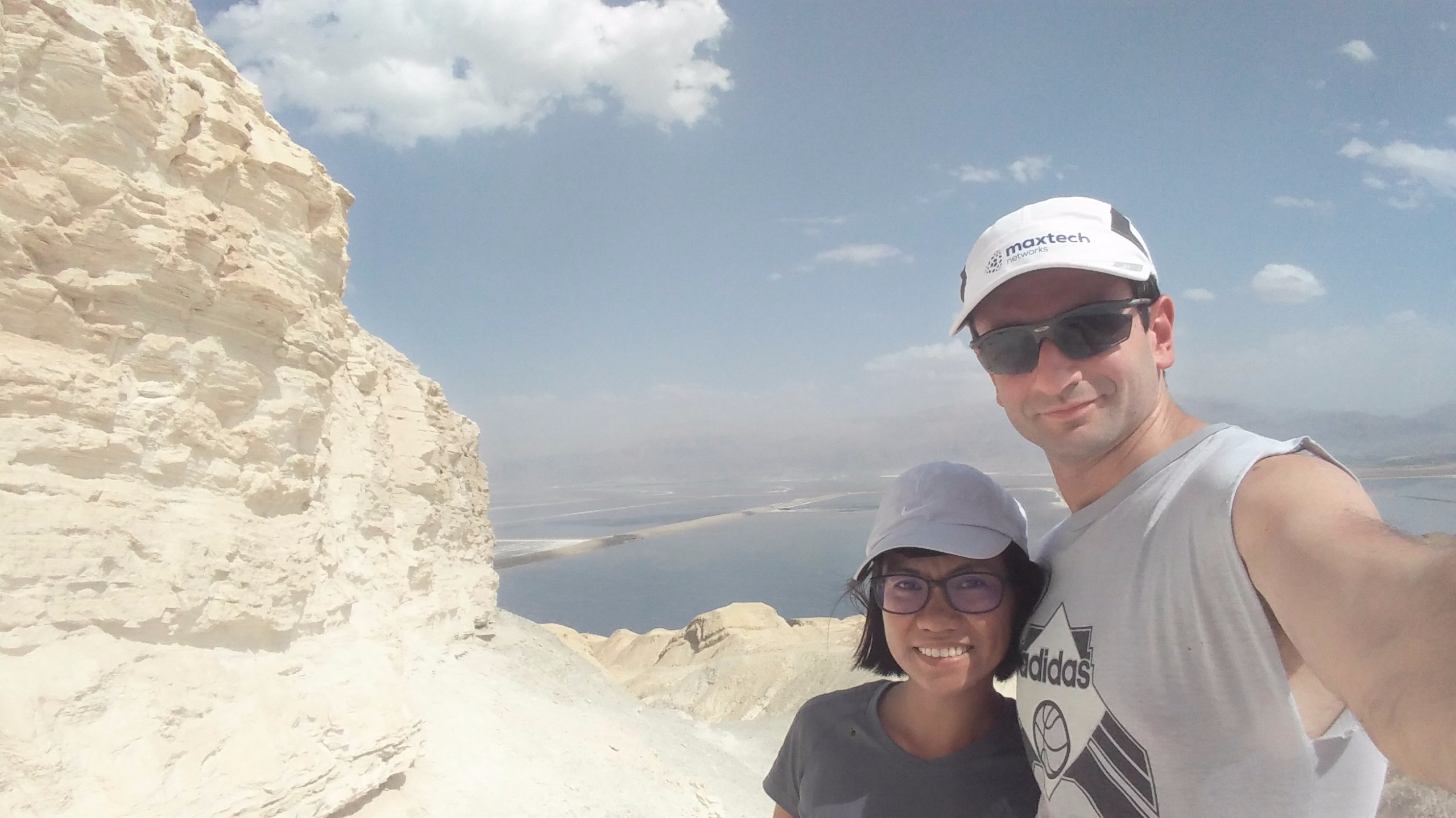
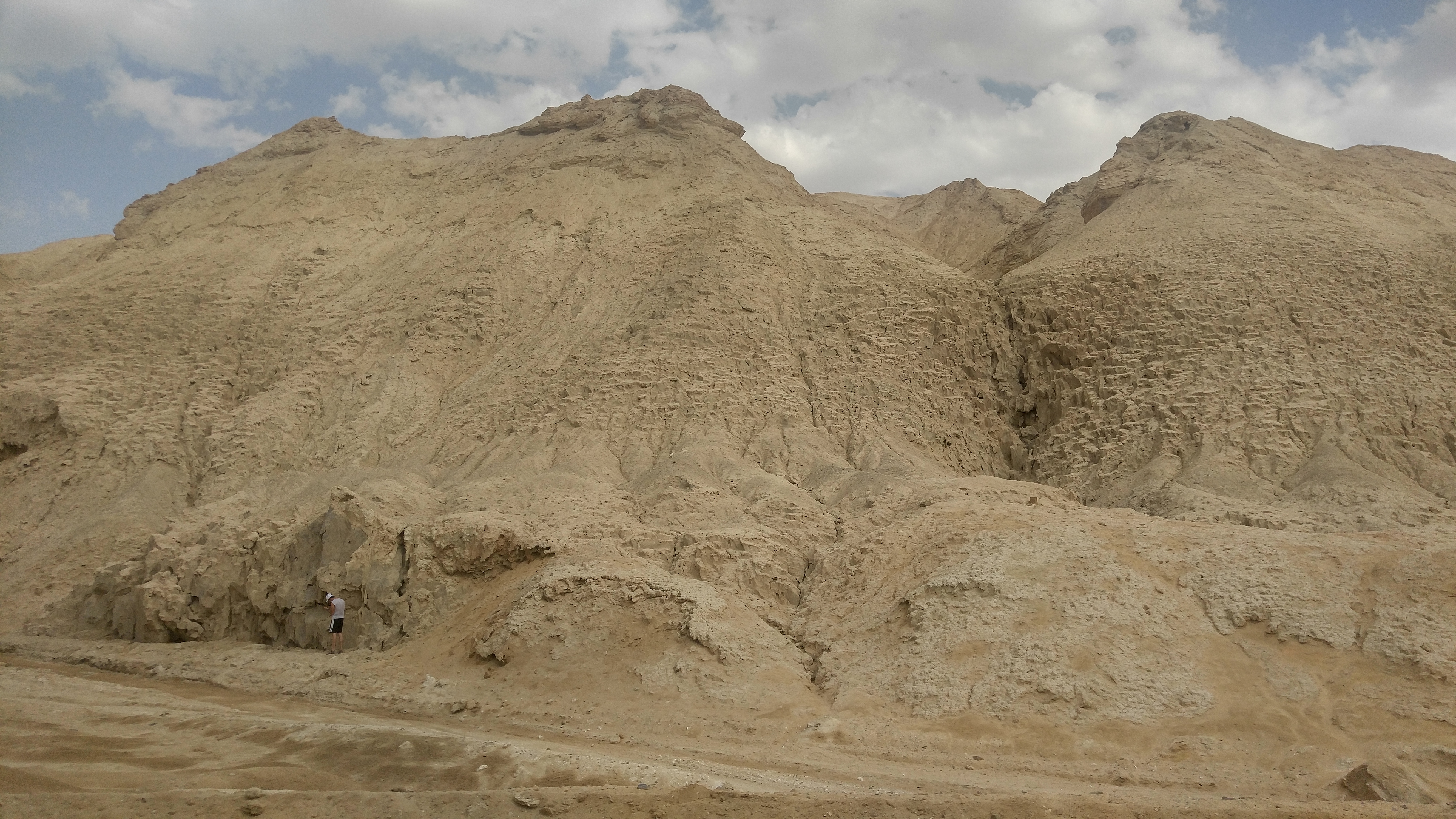
Here’s a clip showing part of the drive going back to the main road:
Holon Park
Igal and I spent a part of an afternoon at this park with his friends. It seems to be a popular place where families do picnics and barbecue. We didn’t do any barbecuing, but we did put out a mat on the grass and talked the afternoon away. Prior to that, we had a late lunch (with sinful dessert!) at Gordos.
I won’t call the place touristy at all but I like doing mundane things with Igal, so it was a nice experience for me.



Flying Into and Out of Israel
Inbound
Departure City
We flew to Tel Aviv from Vienna. Our gate is at the end of the hall which,
apparently, is the norm for flights to Israel because ground personnel have to set-up another security check before you can get into the area of your boarding gate. This makes the last gate optimal. In our flight from Vienna, the area of our gate was cordoned off to control entry of passengers. Before entering this area, the personnel first checked our boarding pass, our hand-carry bags were checked (including swabbing to check for traces of explosives), we were asked to remove our shoes and were subjected to a pat-down. If you are travelling solo with bags, I suggest you visit the toilet and do whatever else you want to do before going to your gate unless you don’t mind going through all the checks again. Anyone who leaves the cordoned area will go through the boarding gate security check again when they get back, whether they have a bag or not.
Arrival in TLV
Igal was with me when I queued up for immigration check. The officer ended up talking to him instead of me. He asked Igal where I will be staying and until when will I be in Israel. He also checked Igal’s entry card. They don’t stamp passports, so I got the blue entry card instead.
Outbound
Checking-in for your flight gets one additional security measure. When queueing up for check-in, passengers have to first go through a security personnel who will ask you questions before you can proceed to the check-in counter. Igal accompanied me in checking-in and the personnel mostly talked to him. I spoke only when she asked what my job is and when she had questions regarding my luggage. The lady was courteous and professional and wasn’t intimidating at all. She even apologized when she let us through and explained that all the questions were for security reasons. After checking-in, it was the usual hand-carry bag scan through an x-ray machine and immigration check before getting into the departure area. When I reached the immigration officer, the only question was whether it was my first time in Israel. I said “Yes”, and he then gave me a pink exit card. That’s it. I was good to go 🙂
I’ve read about experiences of other passengers who went through rigorous security checks for their departure, with some almost missing their flights. Missing a flight is expensive, that’s why I asked Igal to take me to the airport early. I don’t mind waiting too long for boarding. I prefer that over stressing about the possibility of missing my flight. I think he was surprised when I said people suggest to be at the airport three hours before their flight. We were at the airport about two hours before my flight.
Passengers are meticulously profiled and bags are thoroughly checked. There are two things I can focus on about this level of security – (1) getting out of Israel is a hassle, or (2) airport security is trying its best to ensure everyone gets to their destination safely. I chose to focus on the latter.
My two-week stay in Israel was amazing! I wanted to stay longer and exhaust the entire 90 days that I was allowed to be in the state, but I had to go back to work. It was great having the chance to visit the tourist spots and do ordinary things here and there. I’d like to come back! I’m grateful to Igal for taking me around and to his friends for being warm 🙂
Israel offers diverse activities. Among other things – You can go hiking. You can go off-roading. You can go swim in or chill by the Mediterranean sea. You can go on water activities in a lake that is called a sea (Kinneret / Sea of Galilee). You can leisurely walk in a city then, minutes after, find yourself by a beach (Tel Aviv). You can float naturally in lake that is also called a sea (Dead Sea / Salt Sea). You can dip and relax by its hot springs.
With the two weeks that I had, I wouldn’t say that I’m already in love but I am interested and definitely want to get to know this country more. I just need to schedule that second visit!




